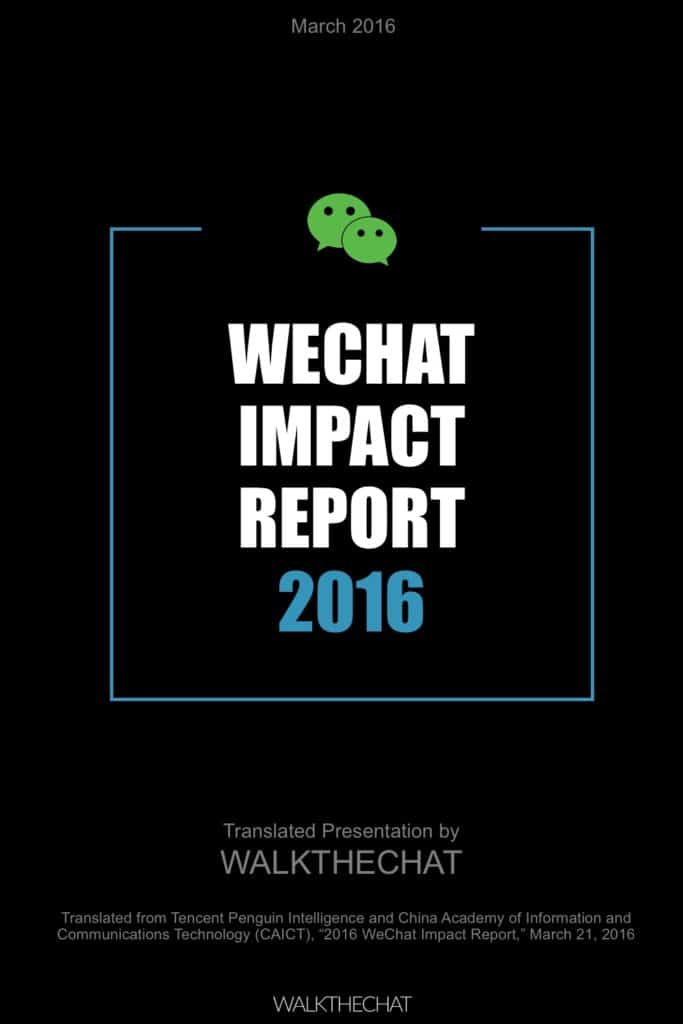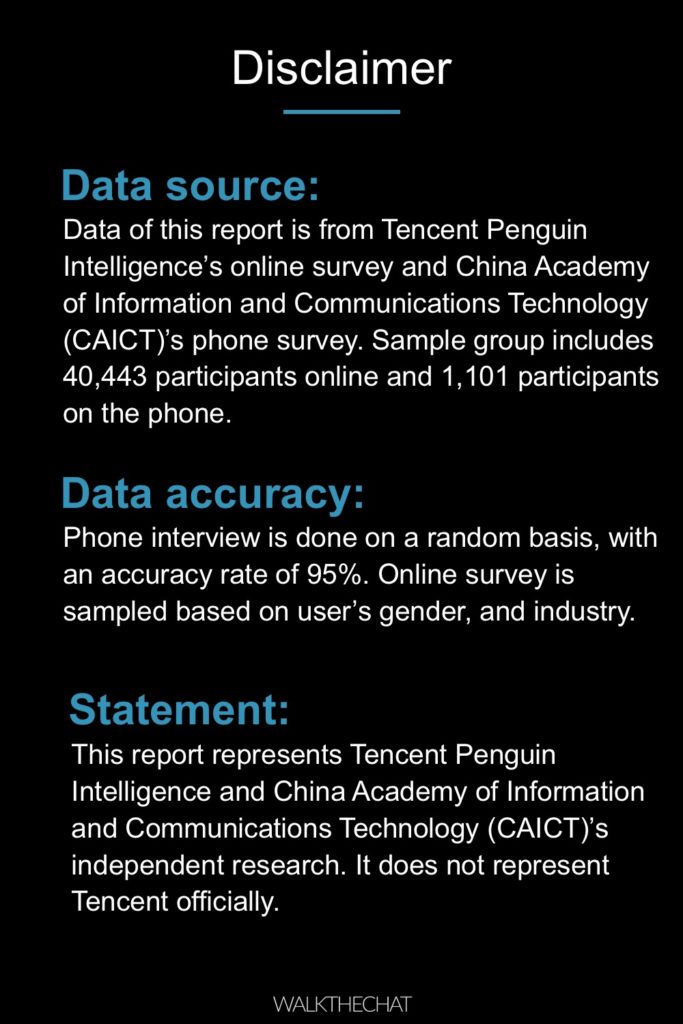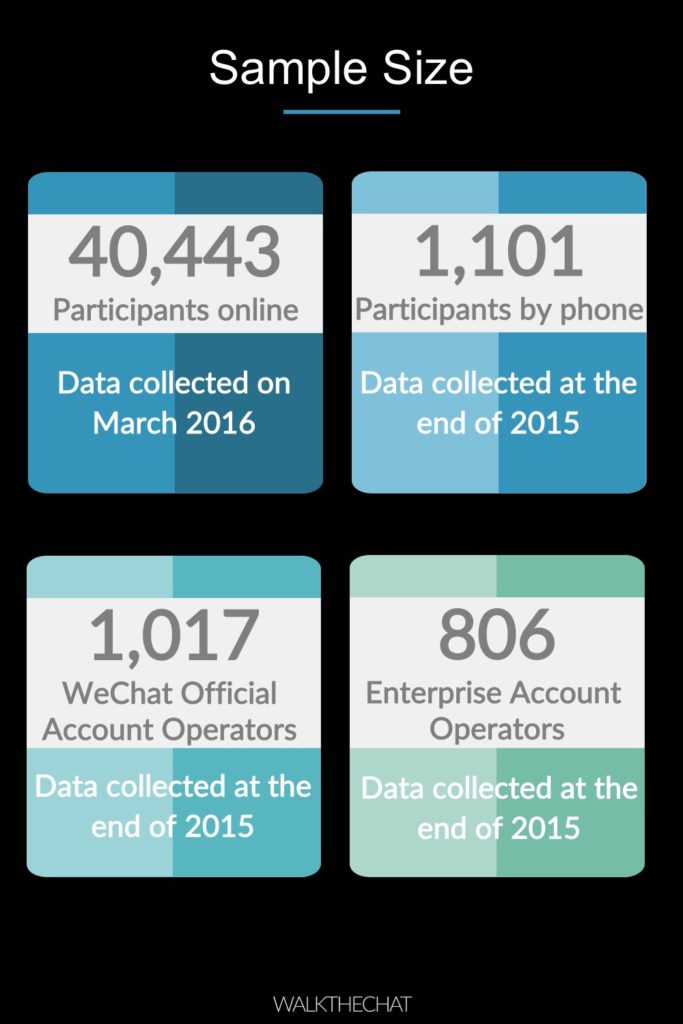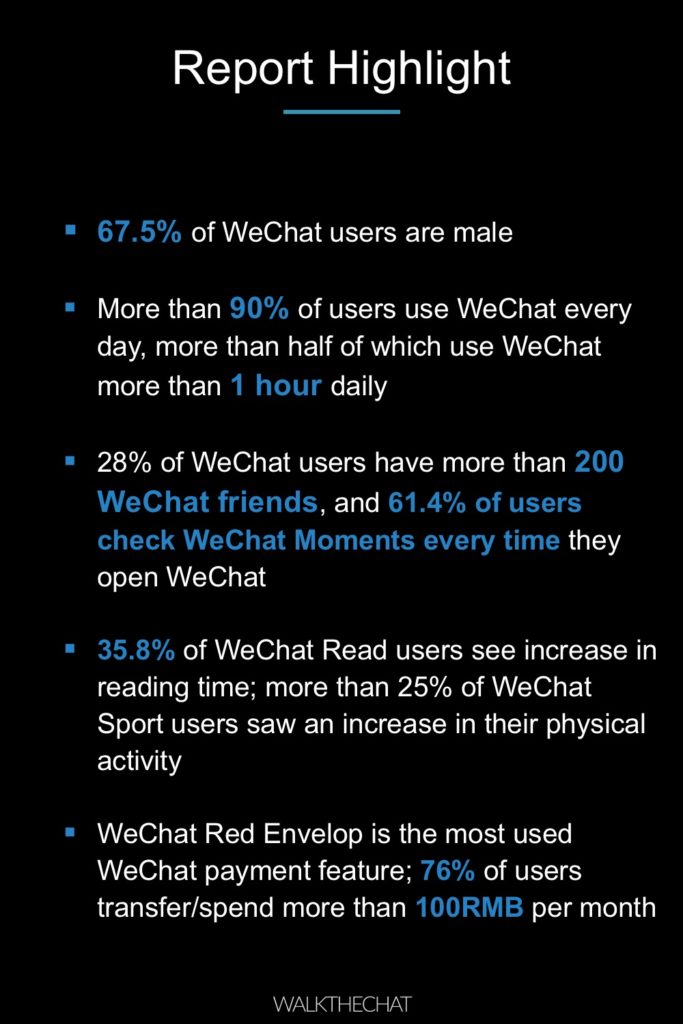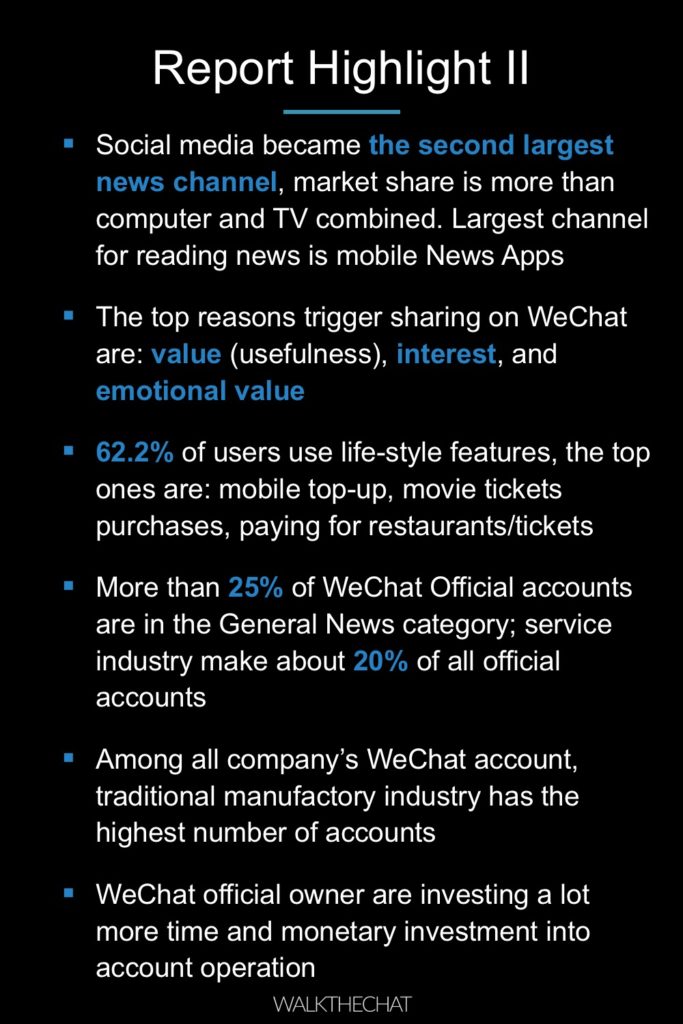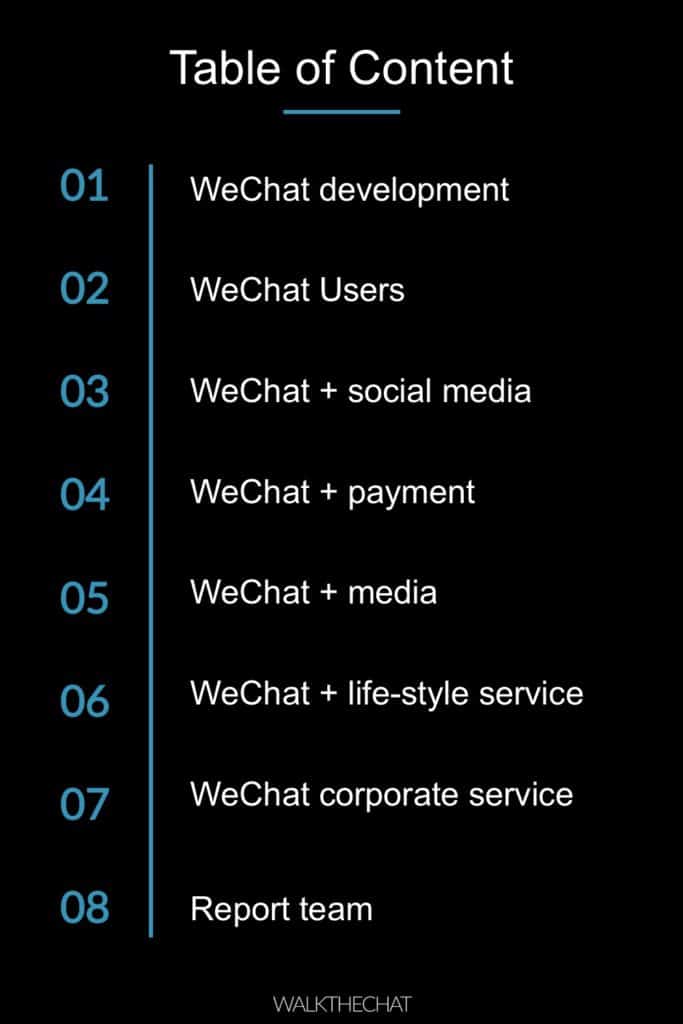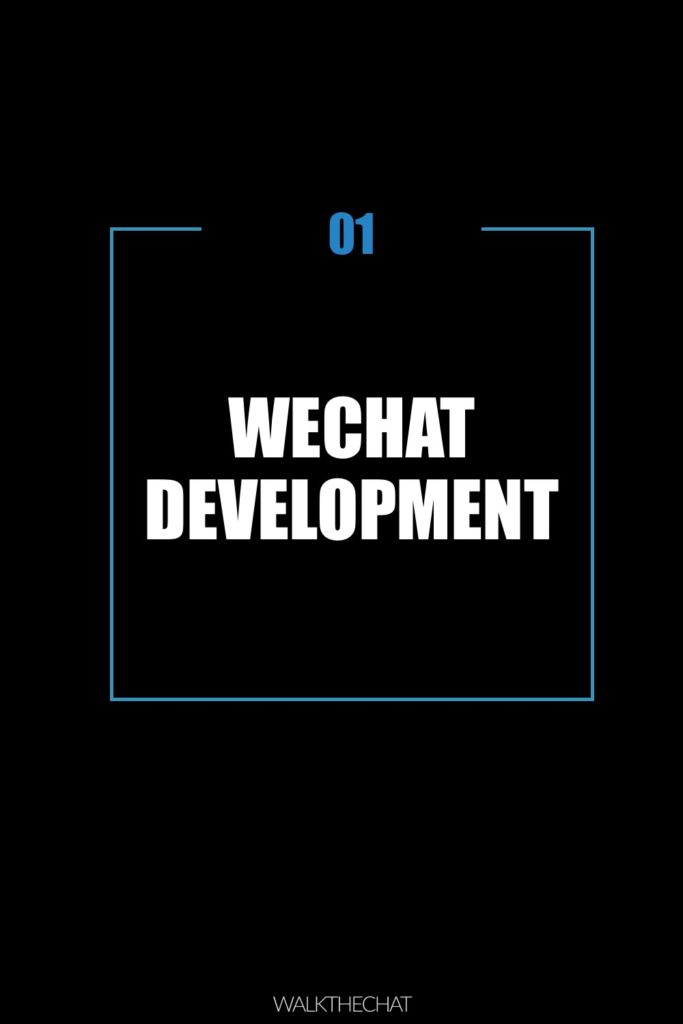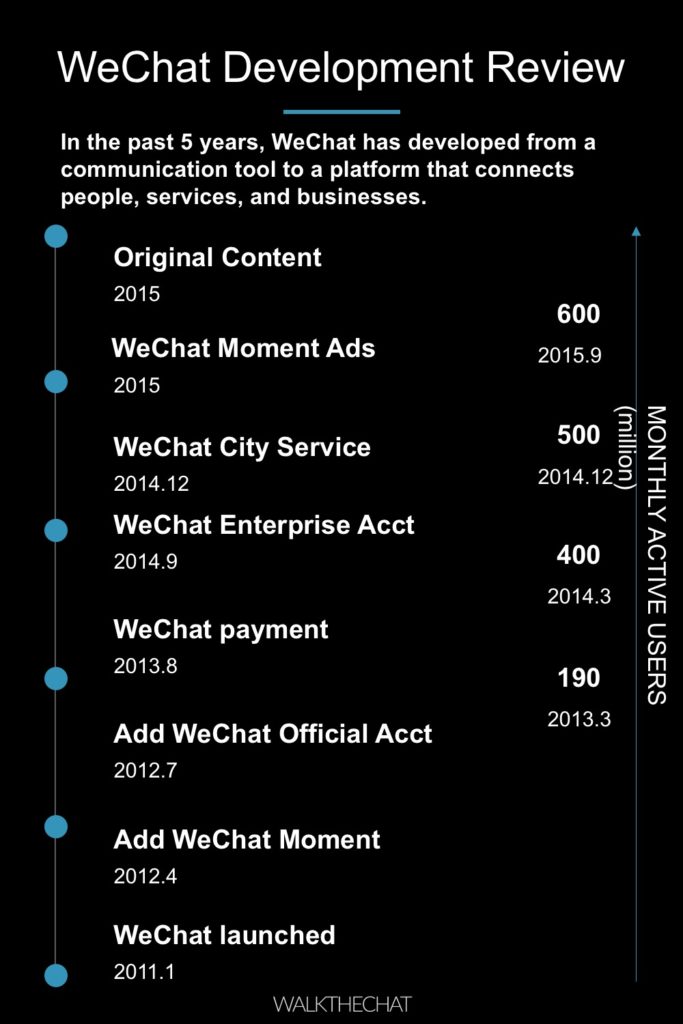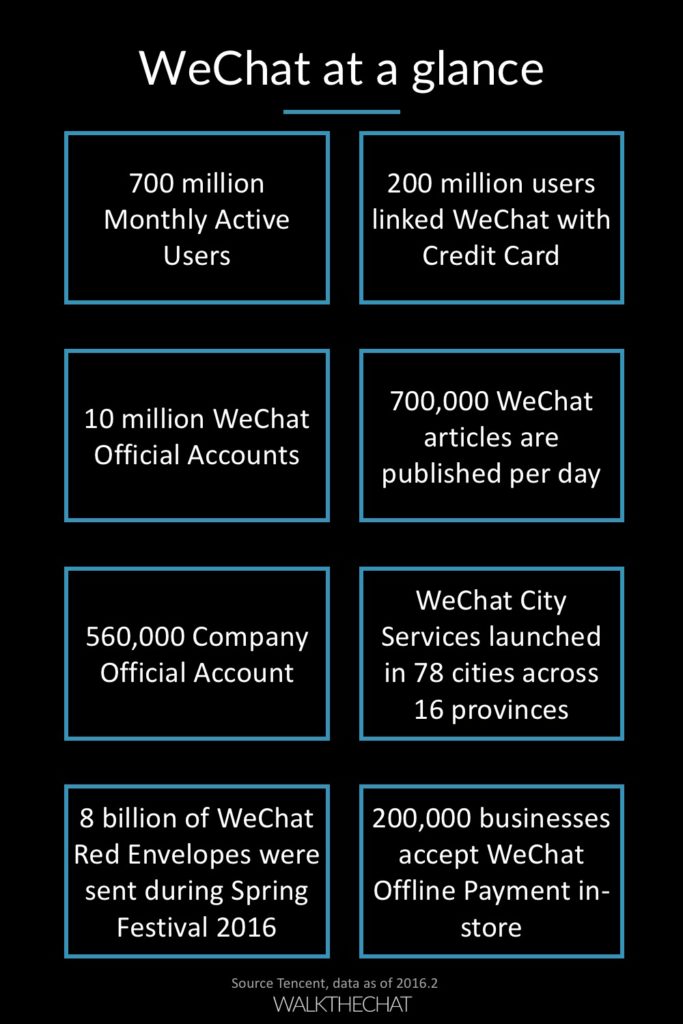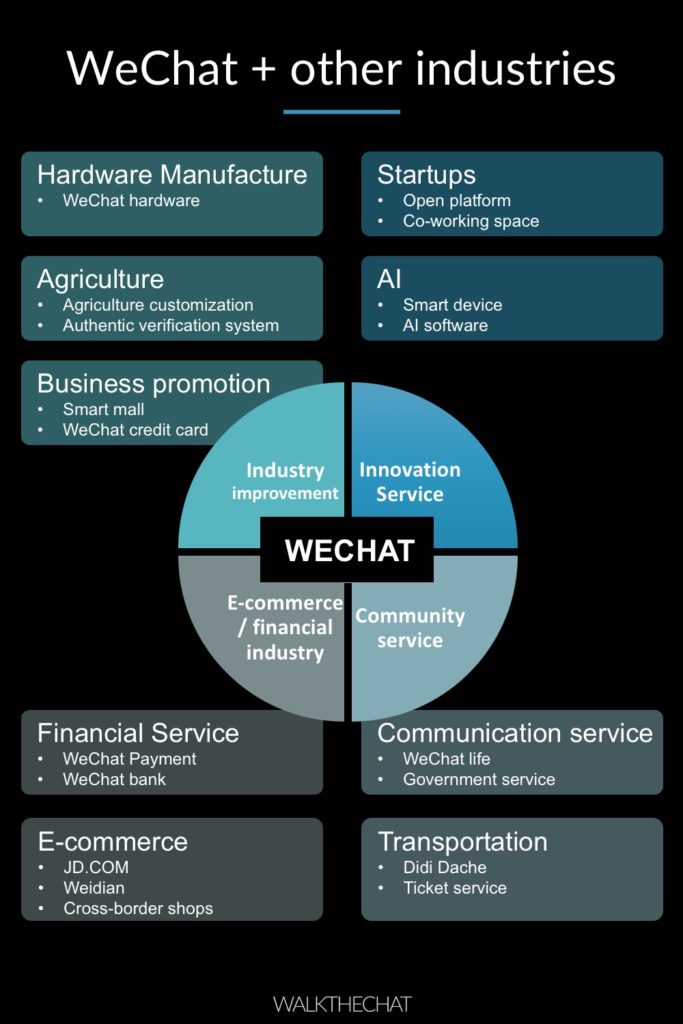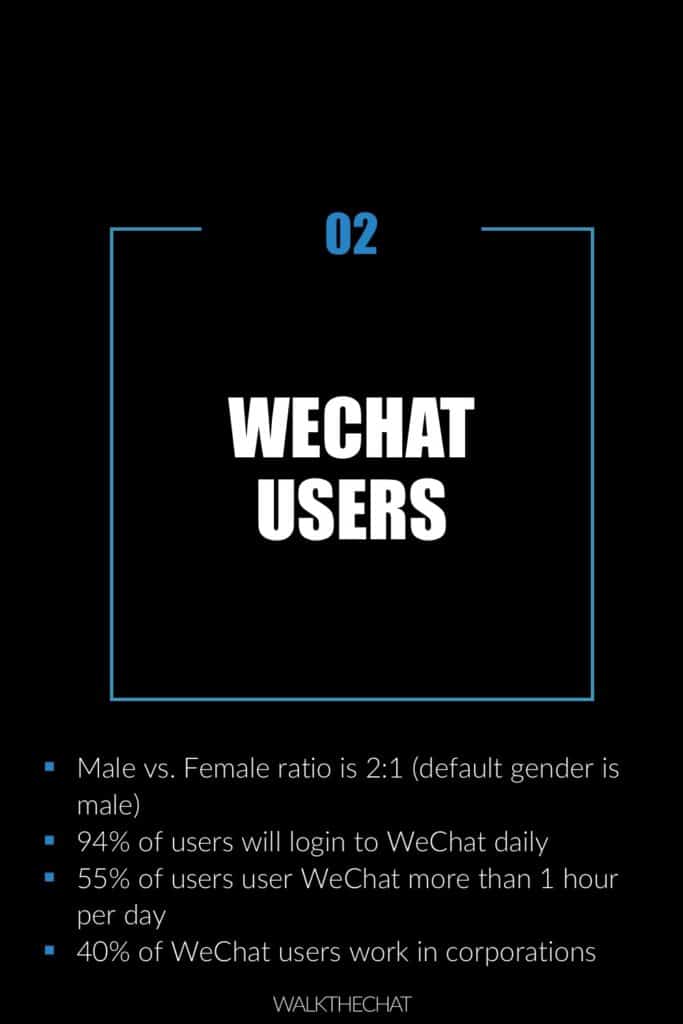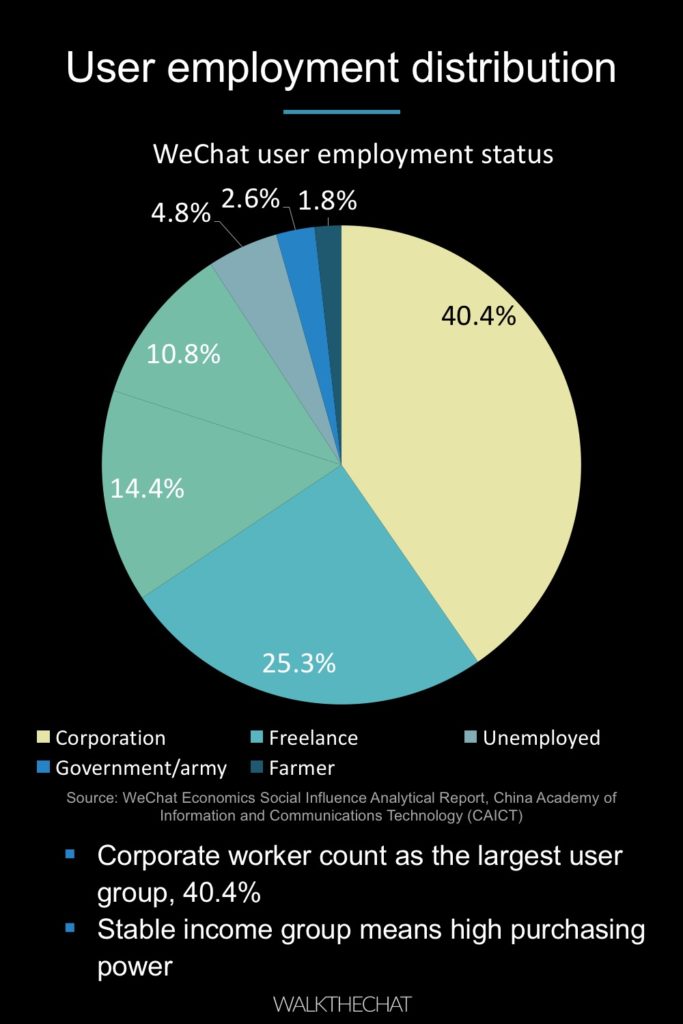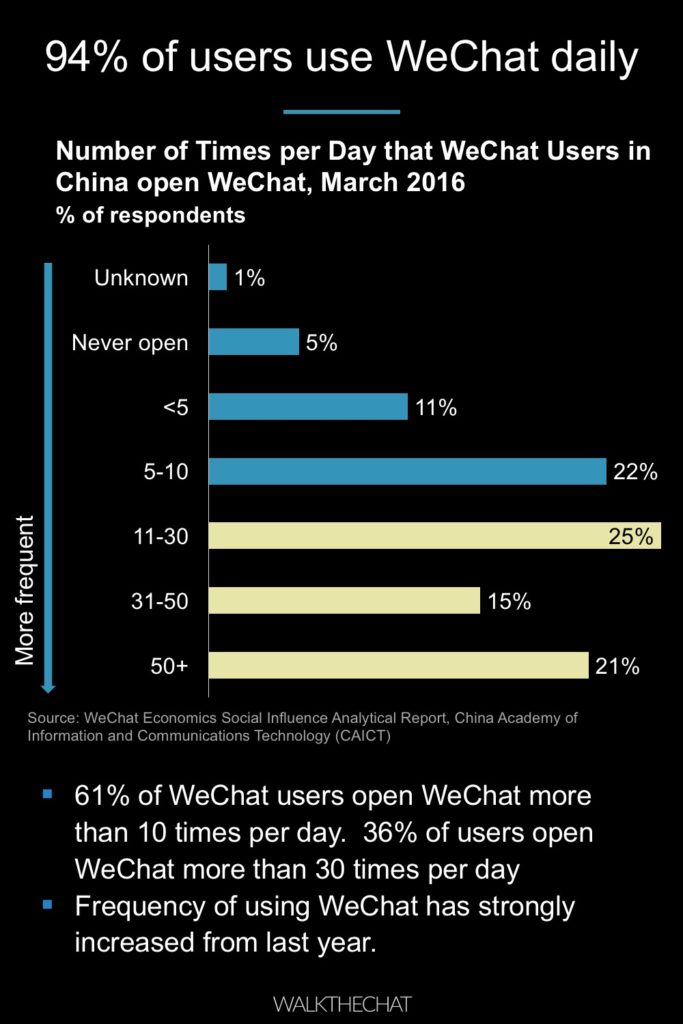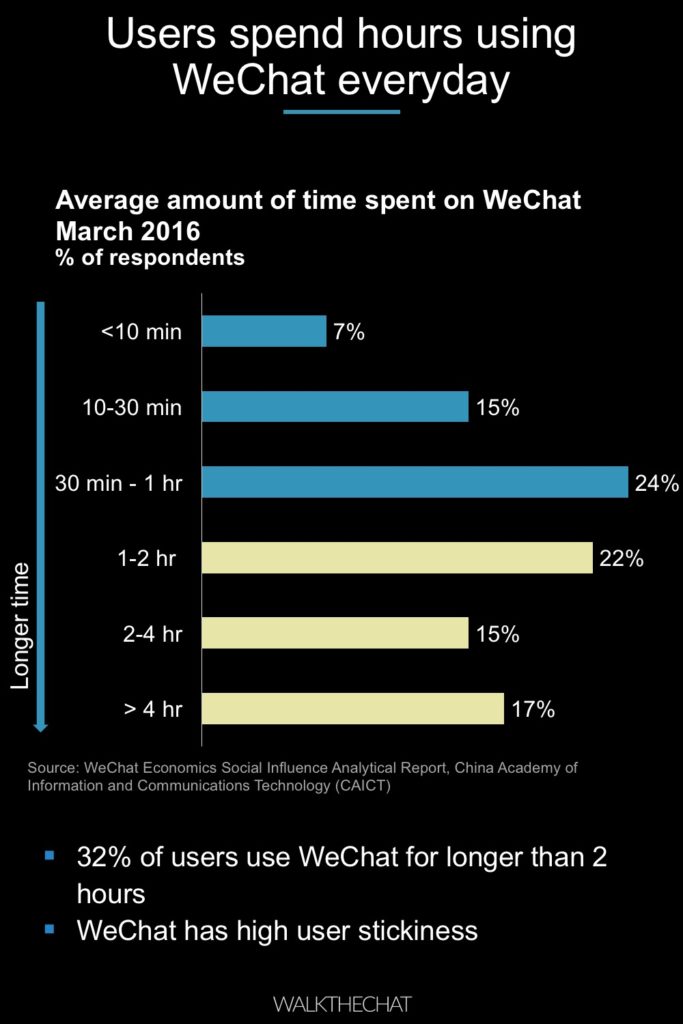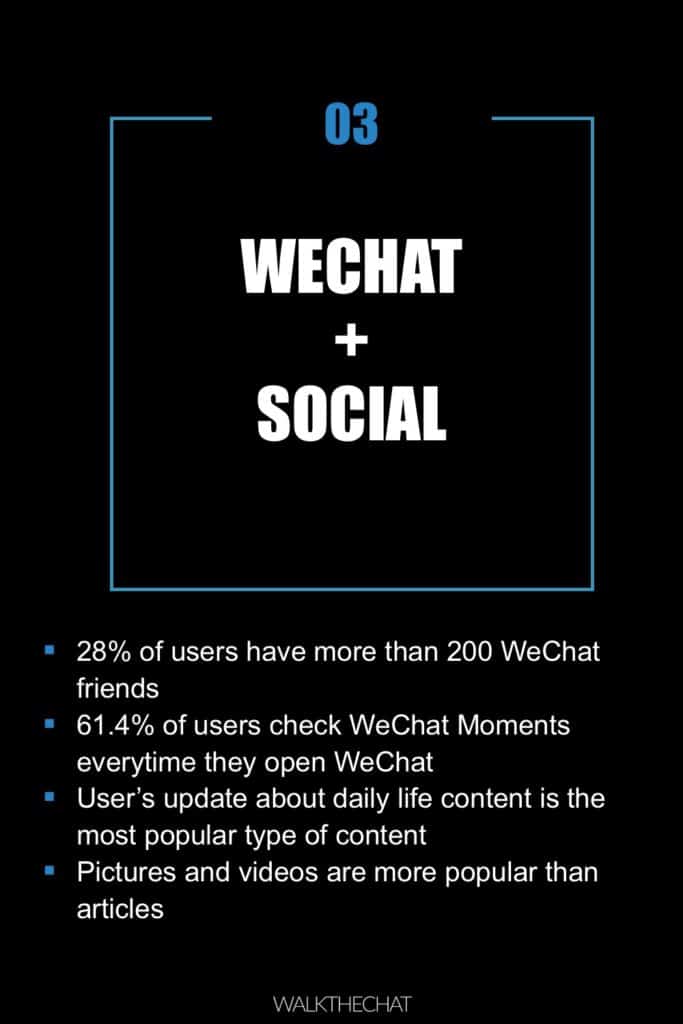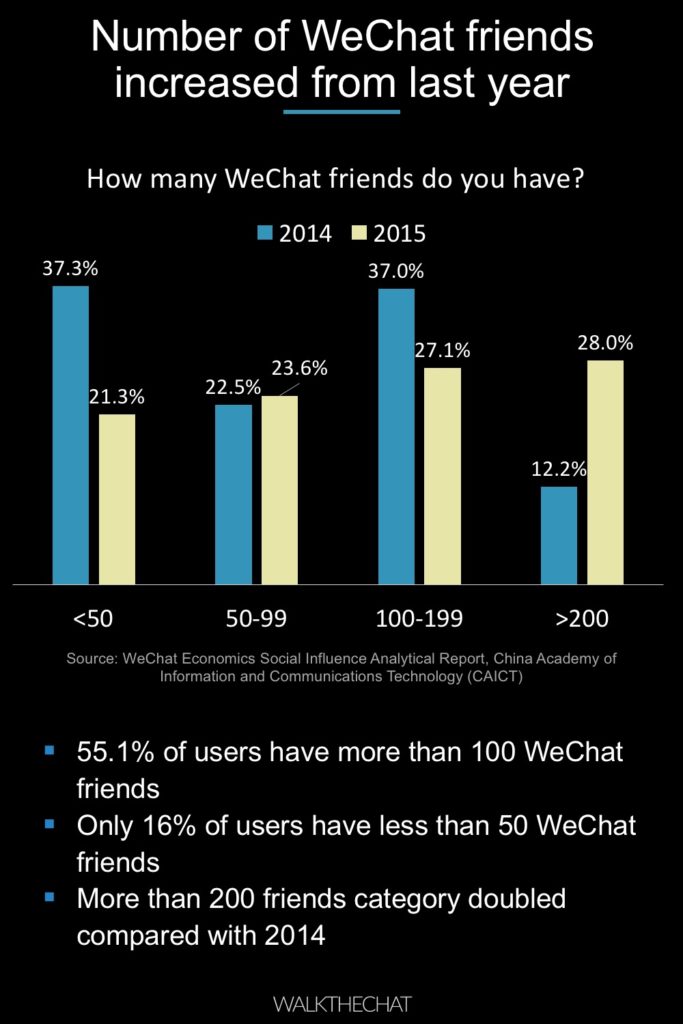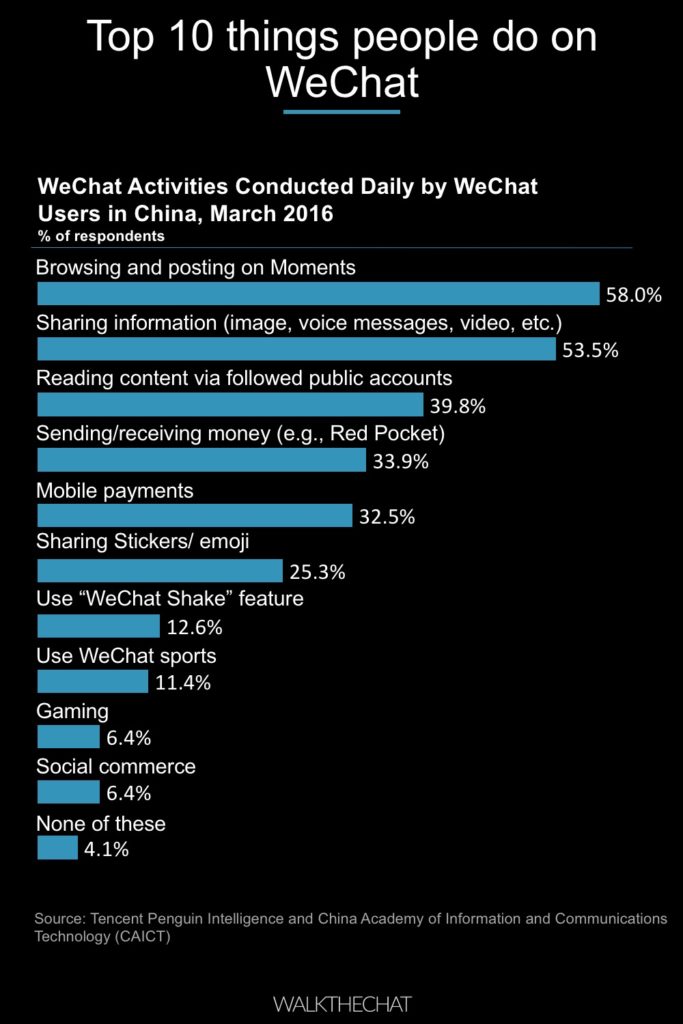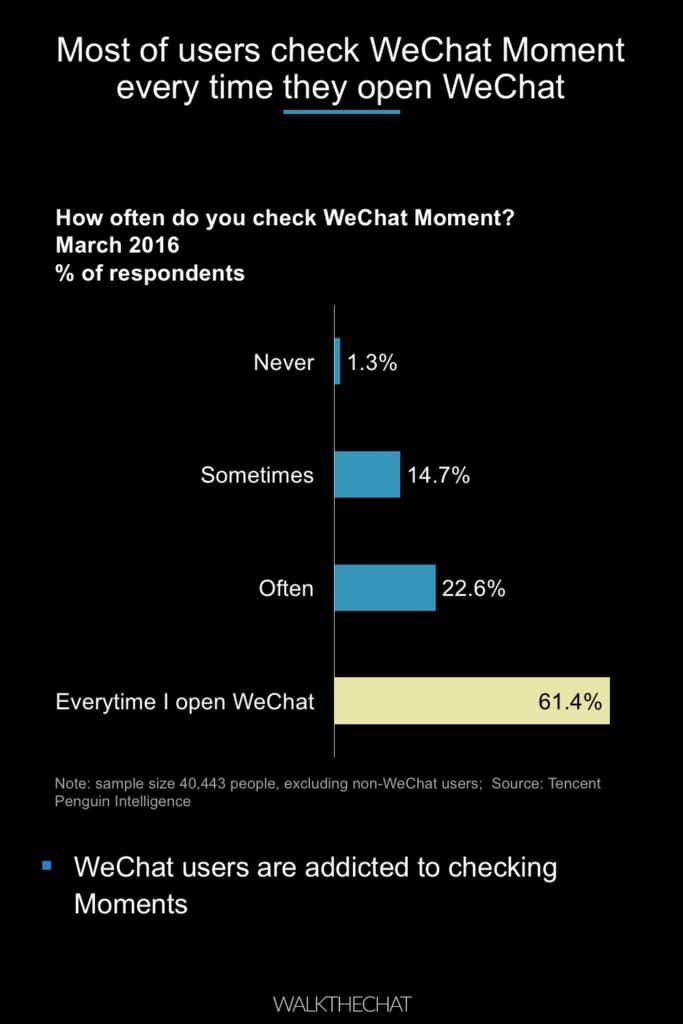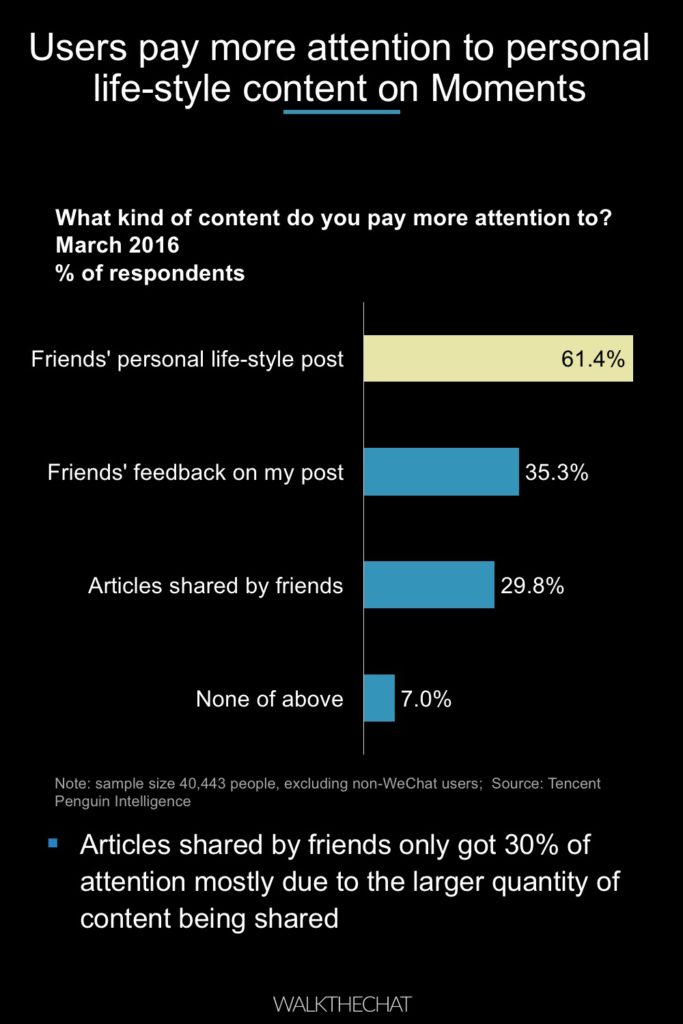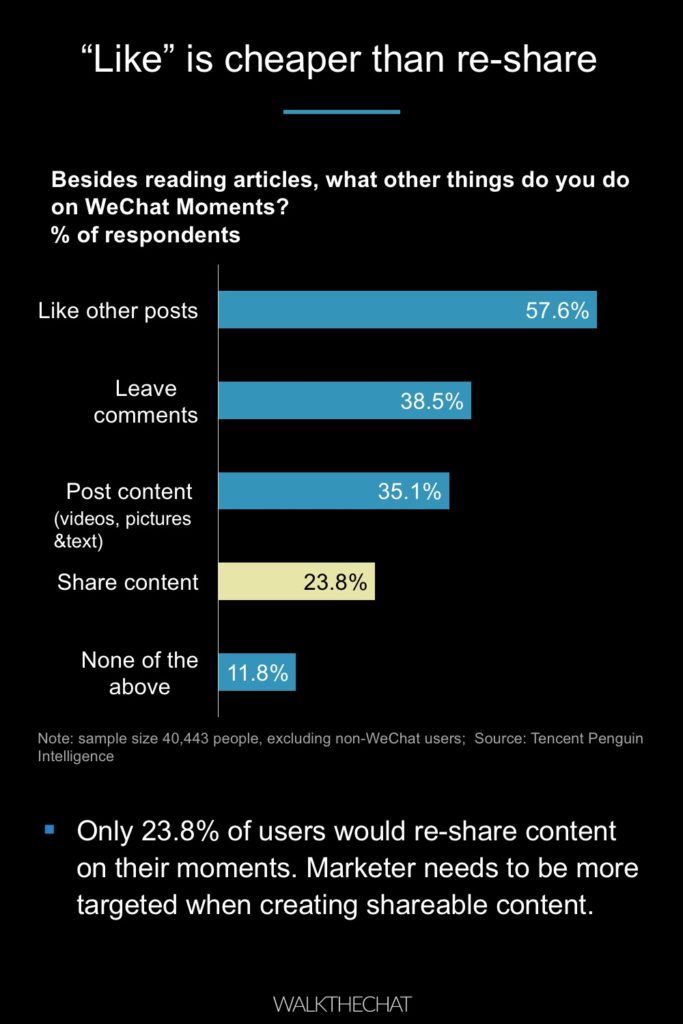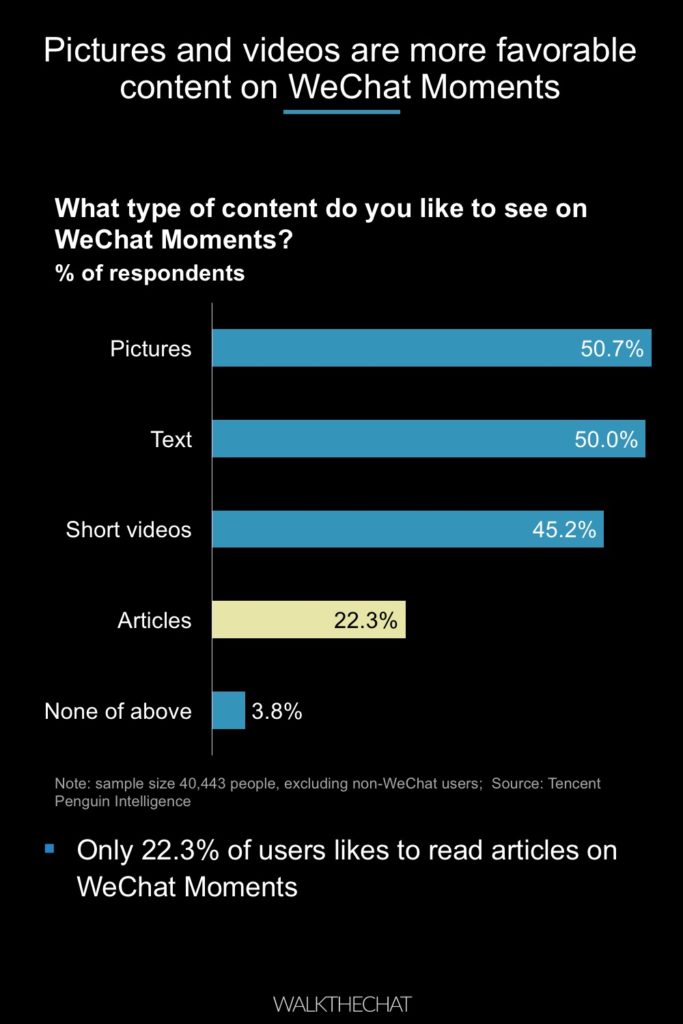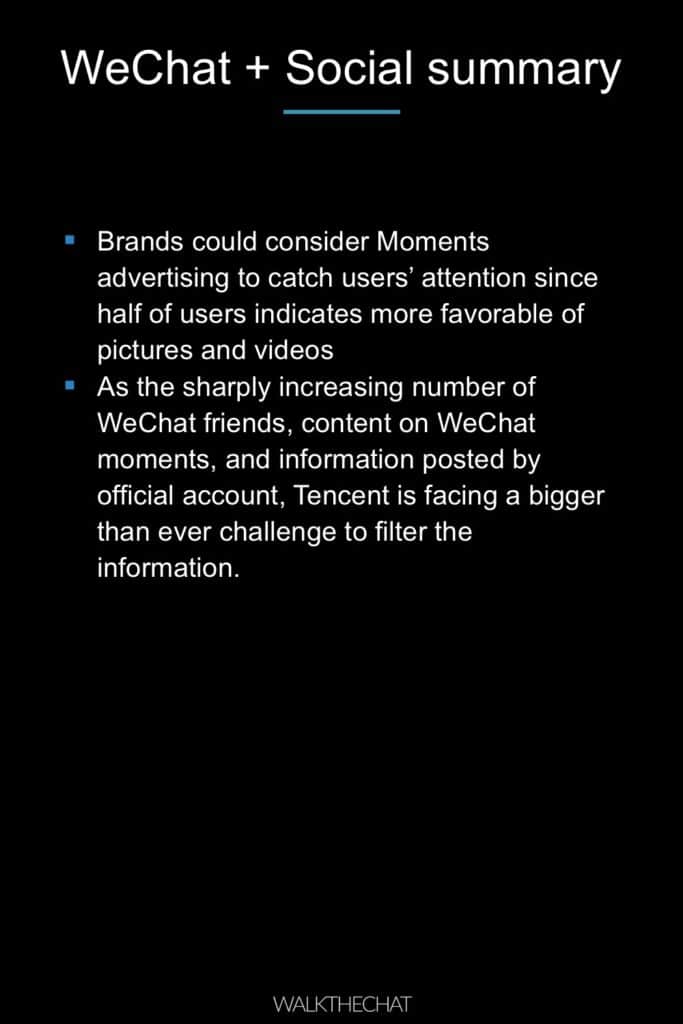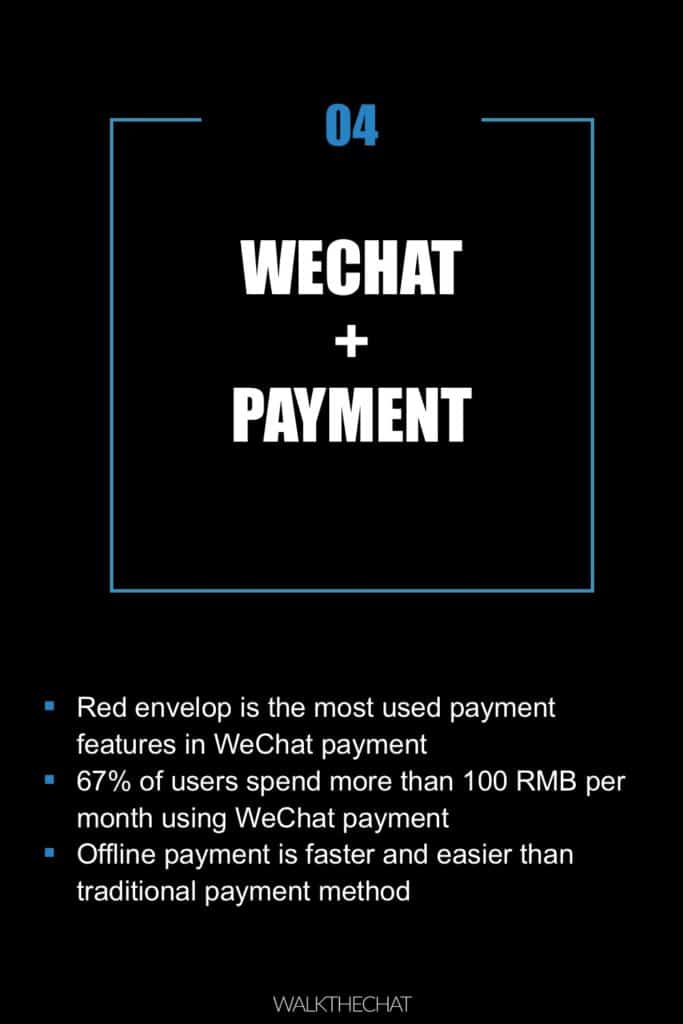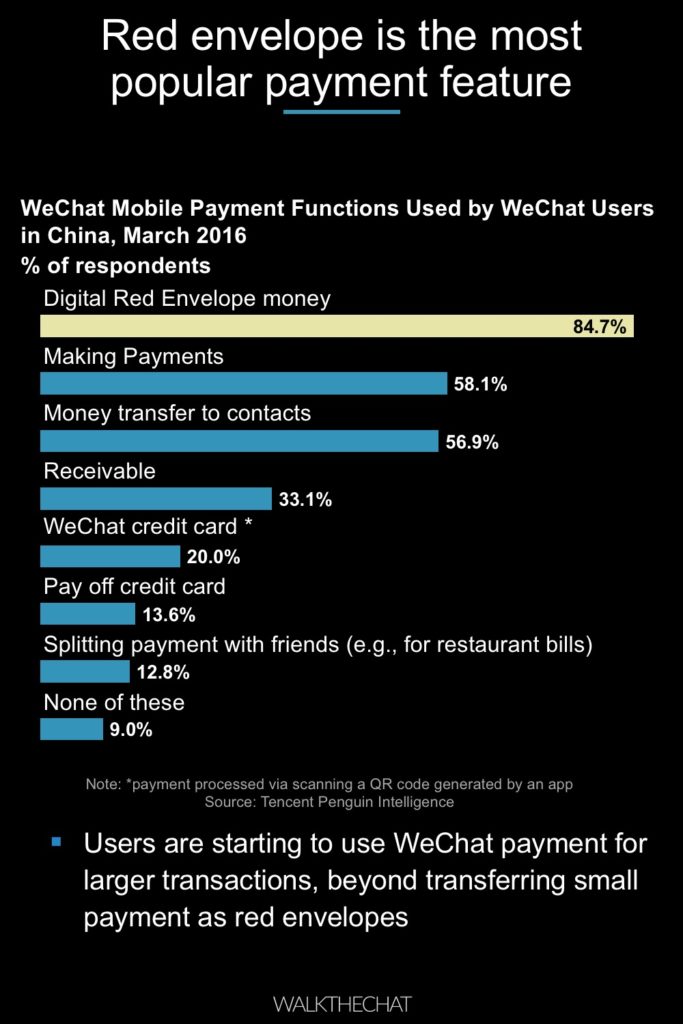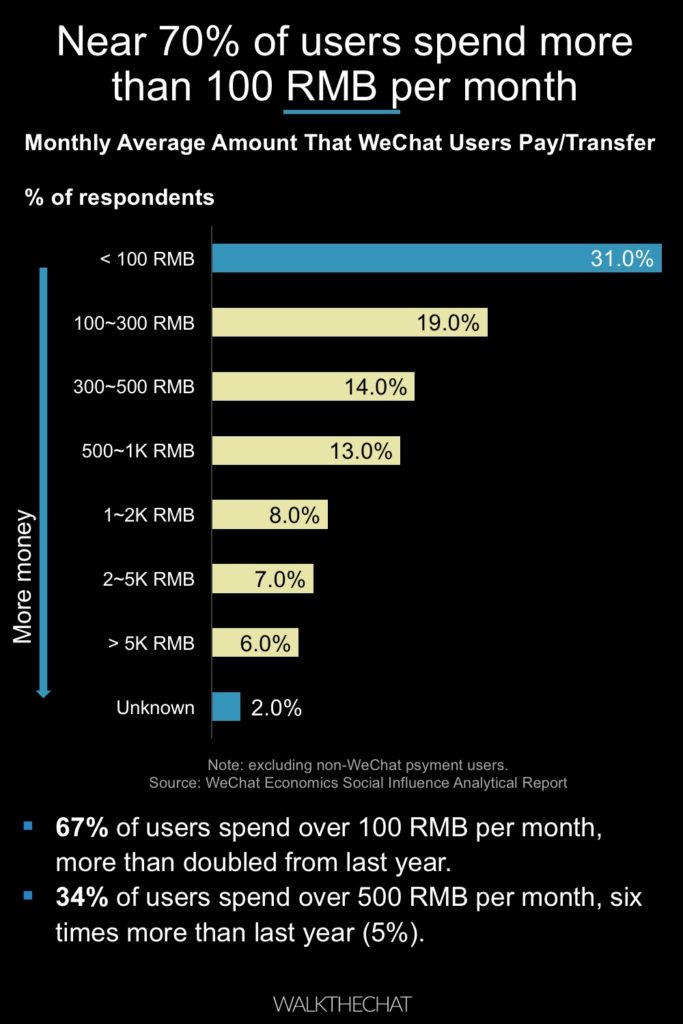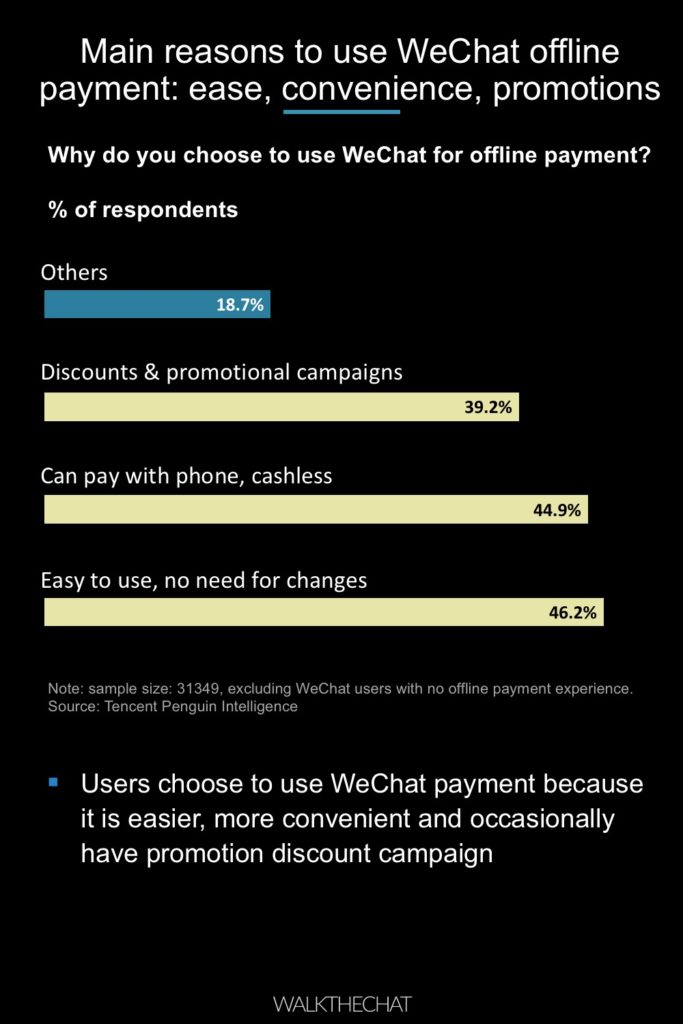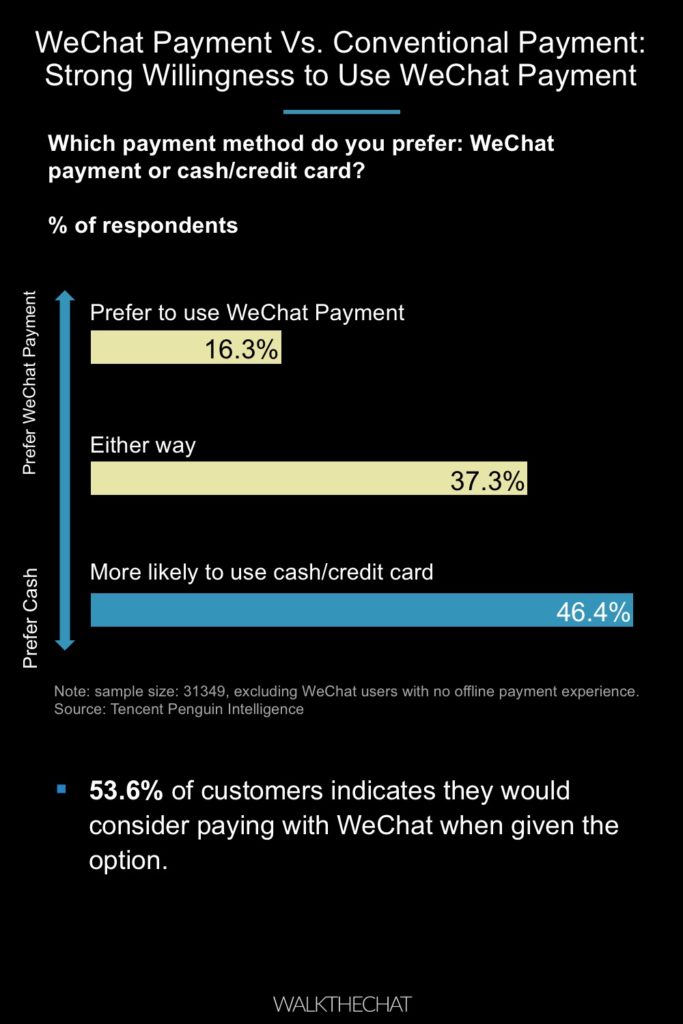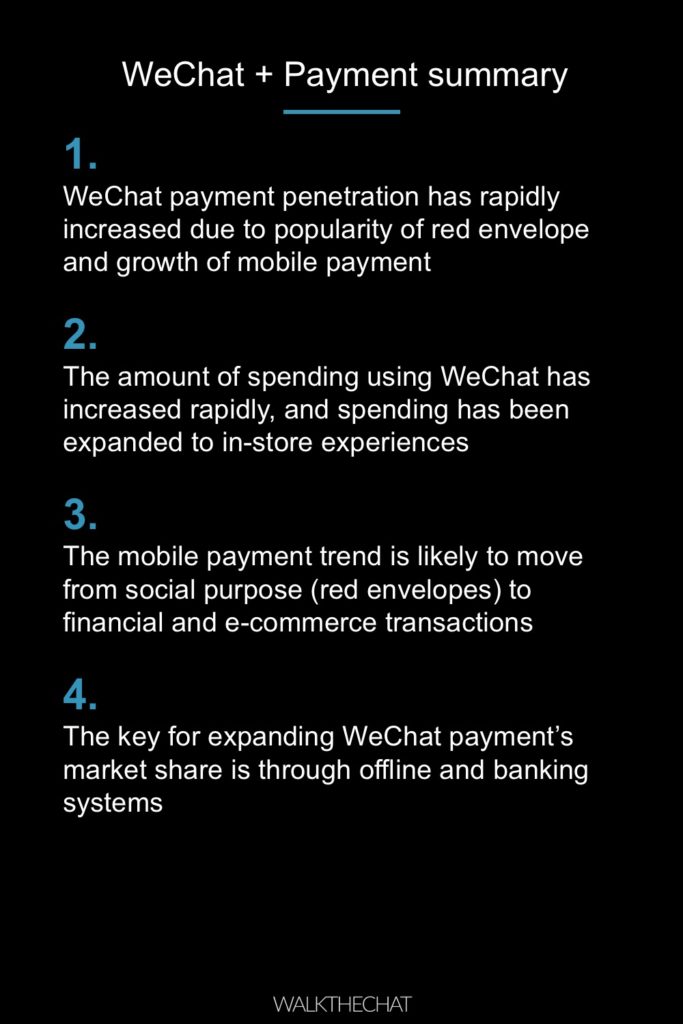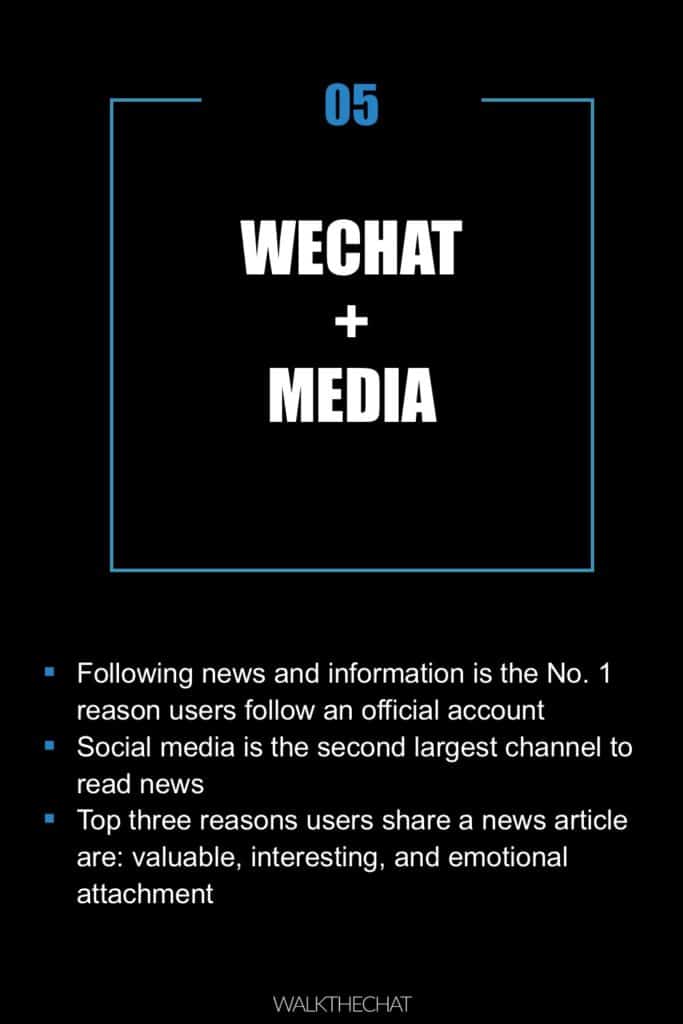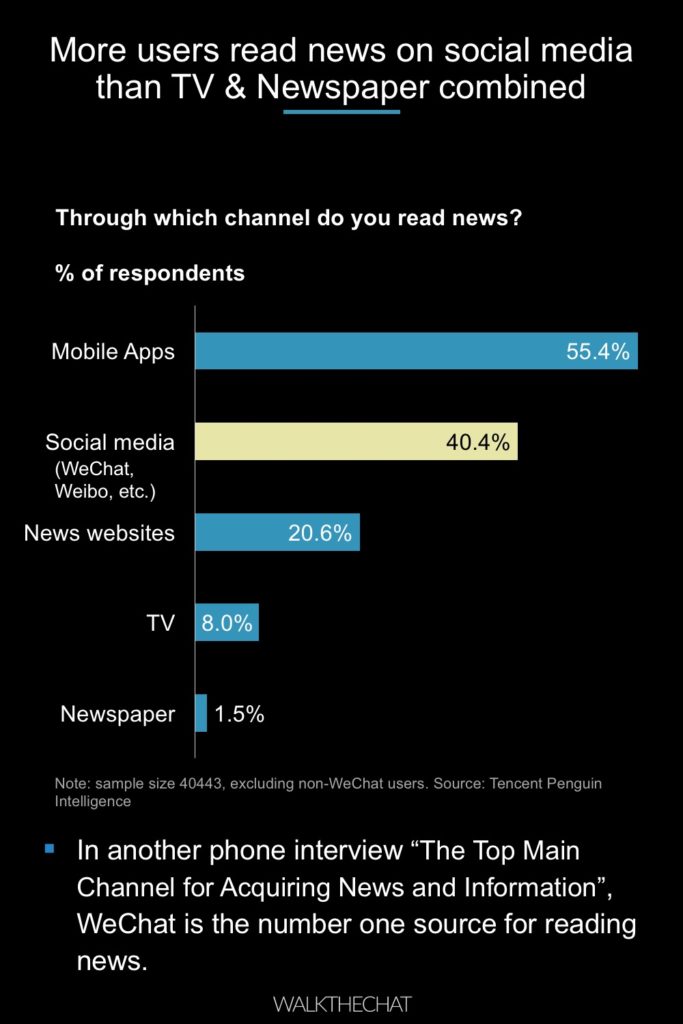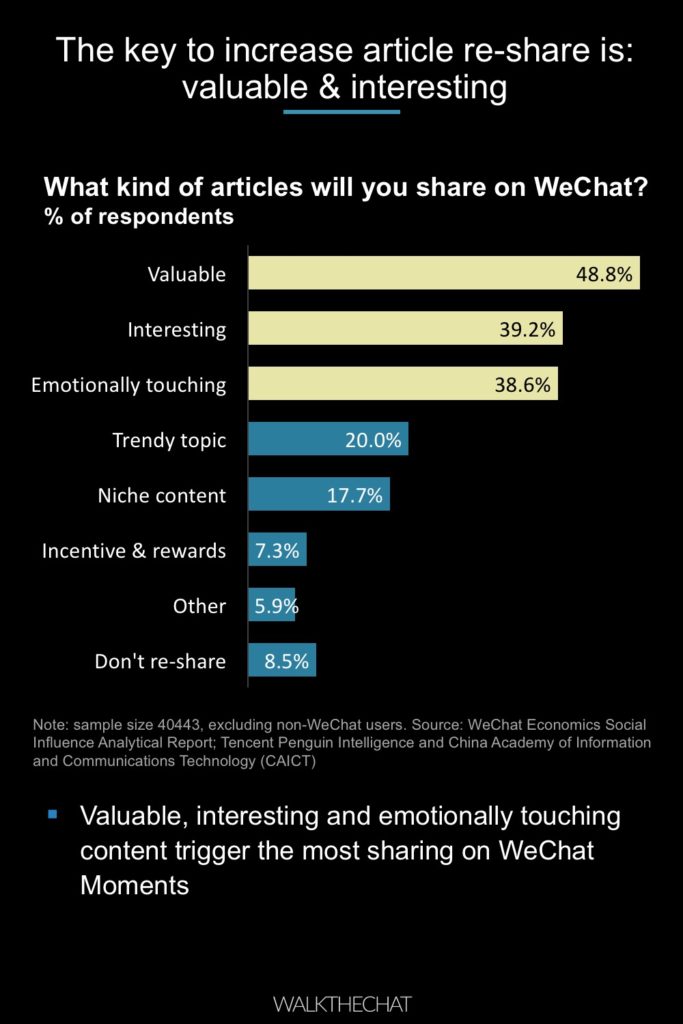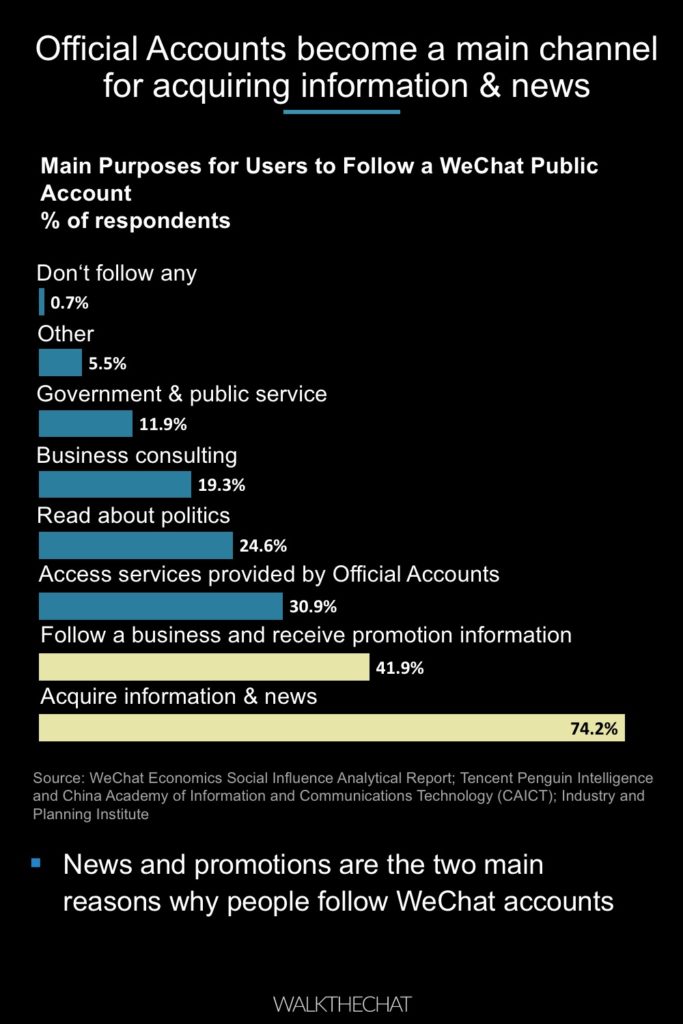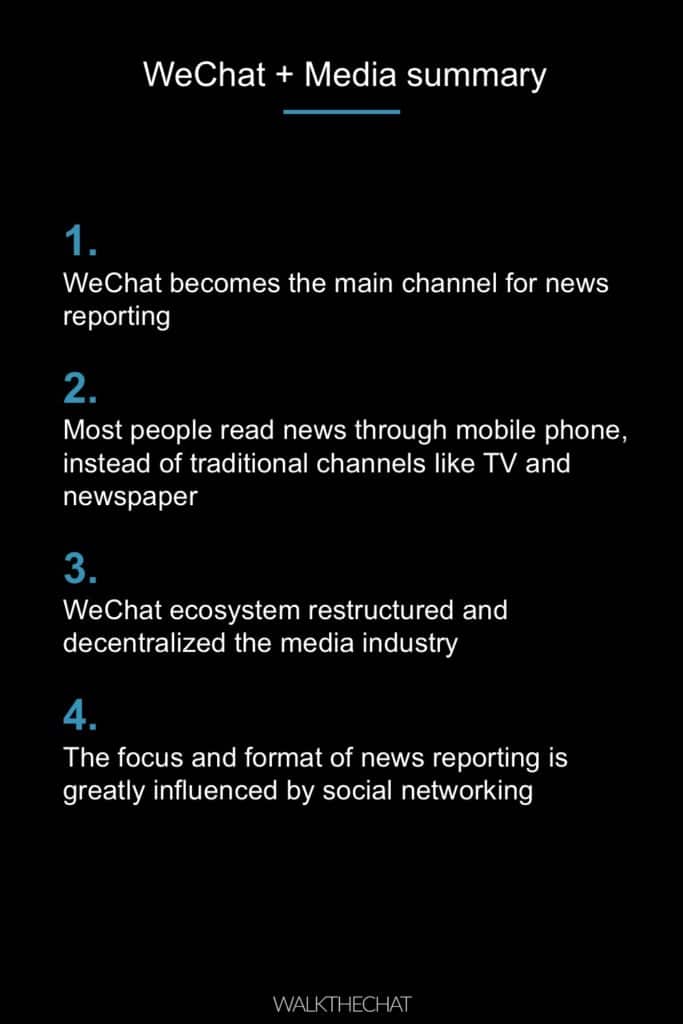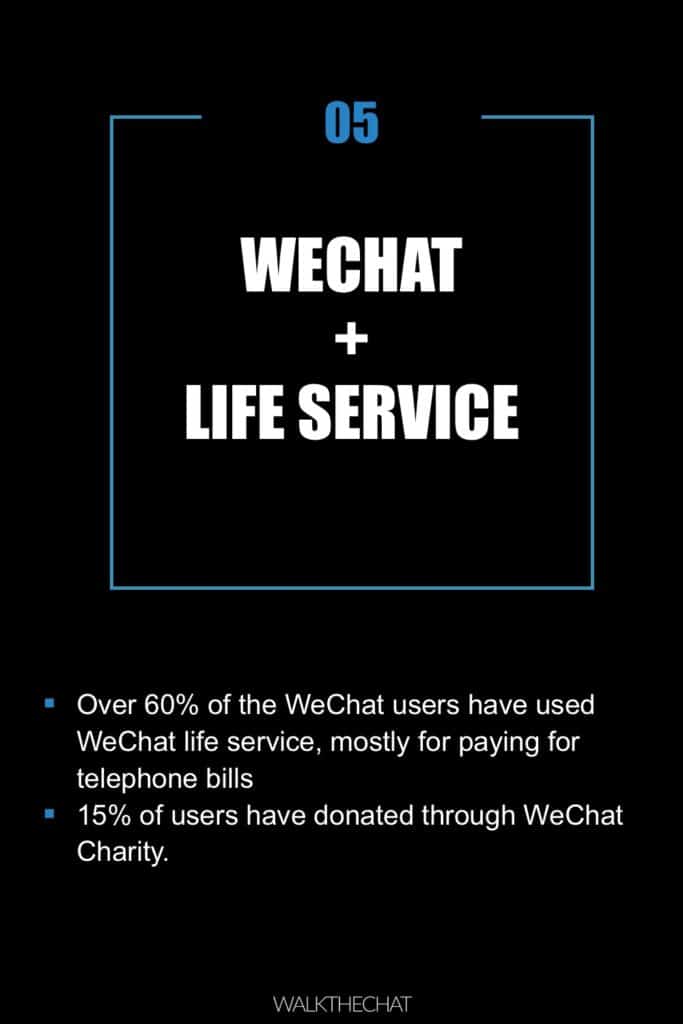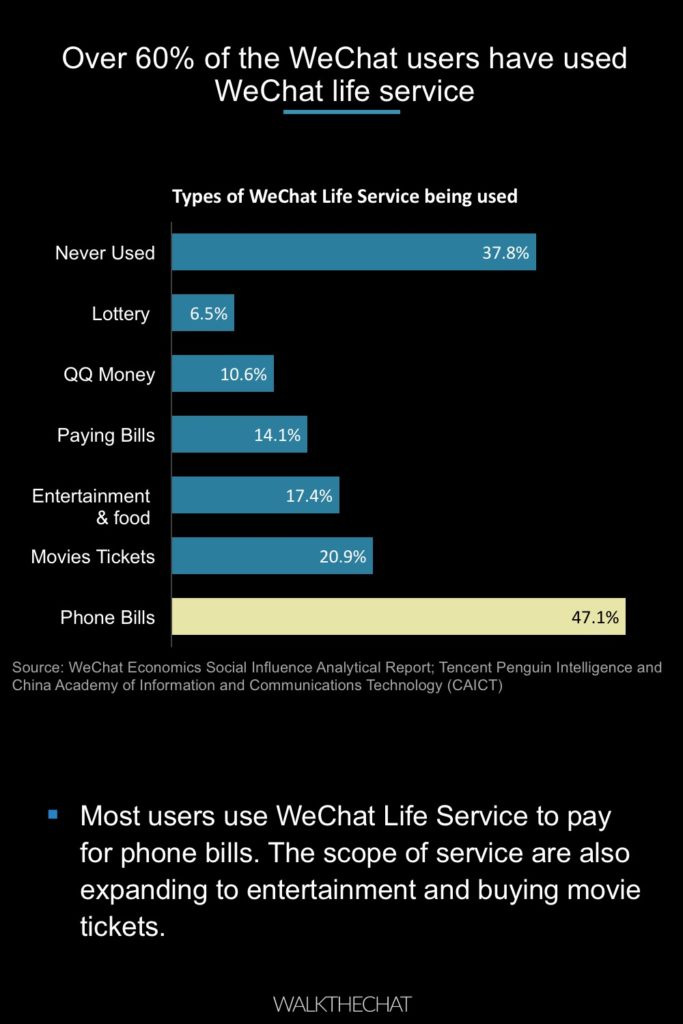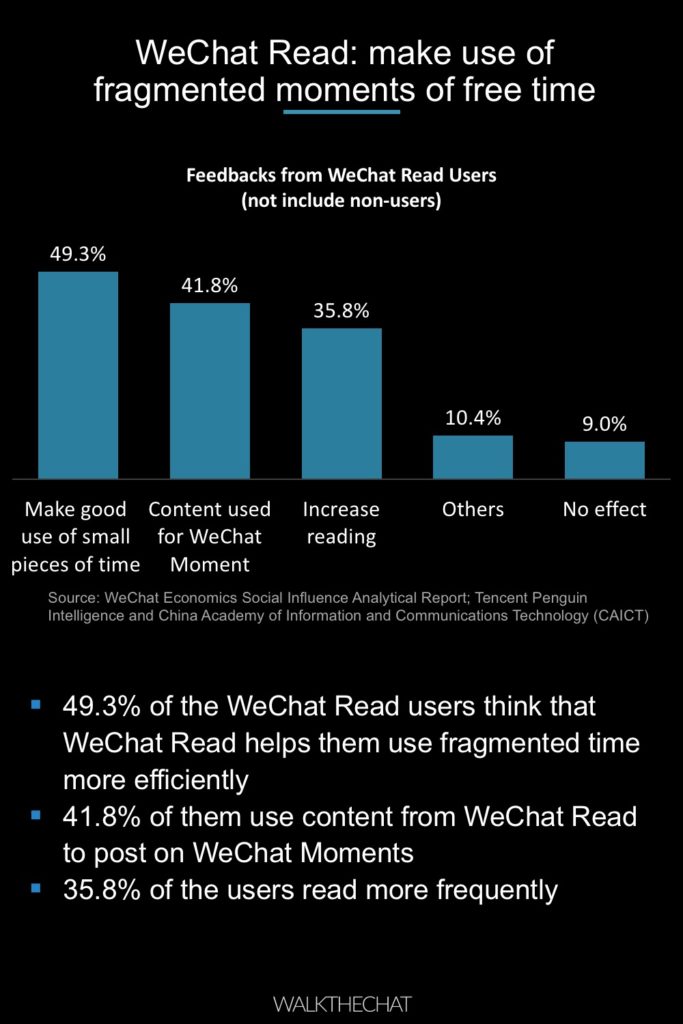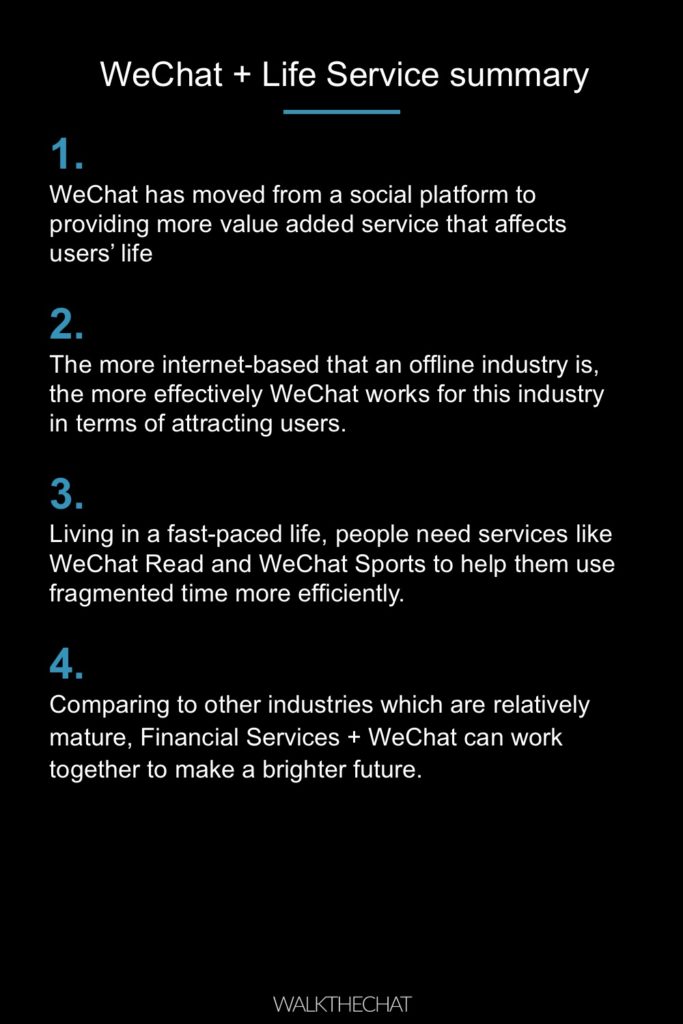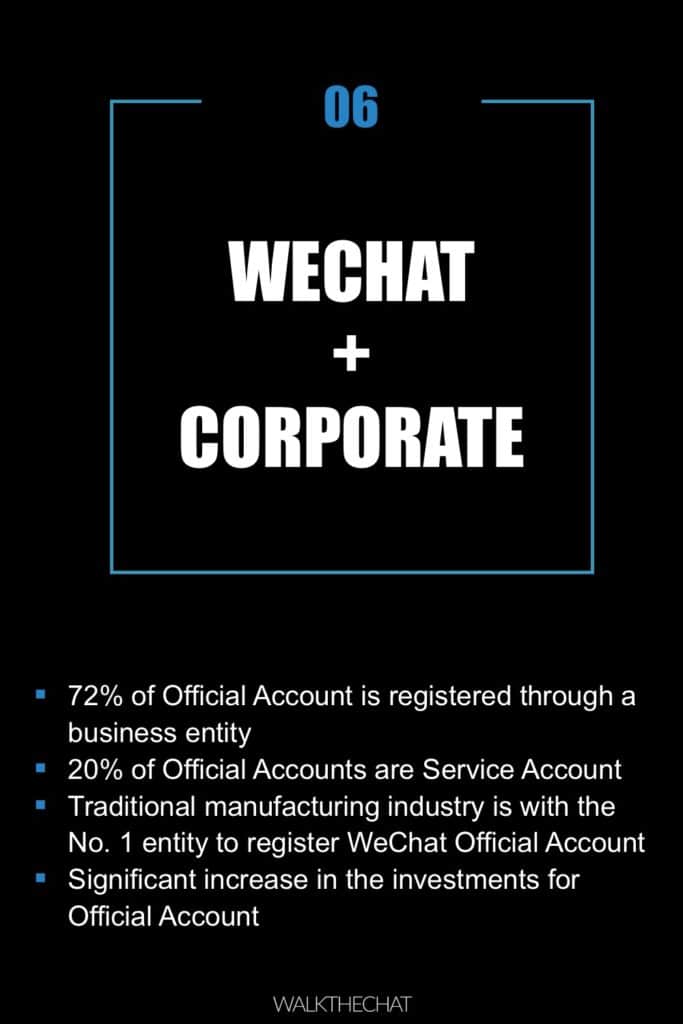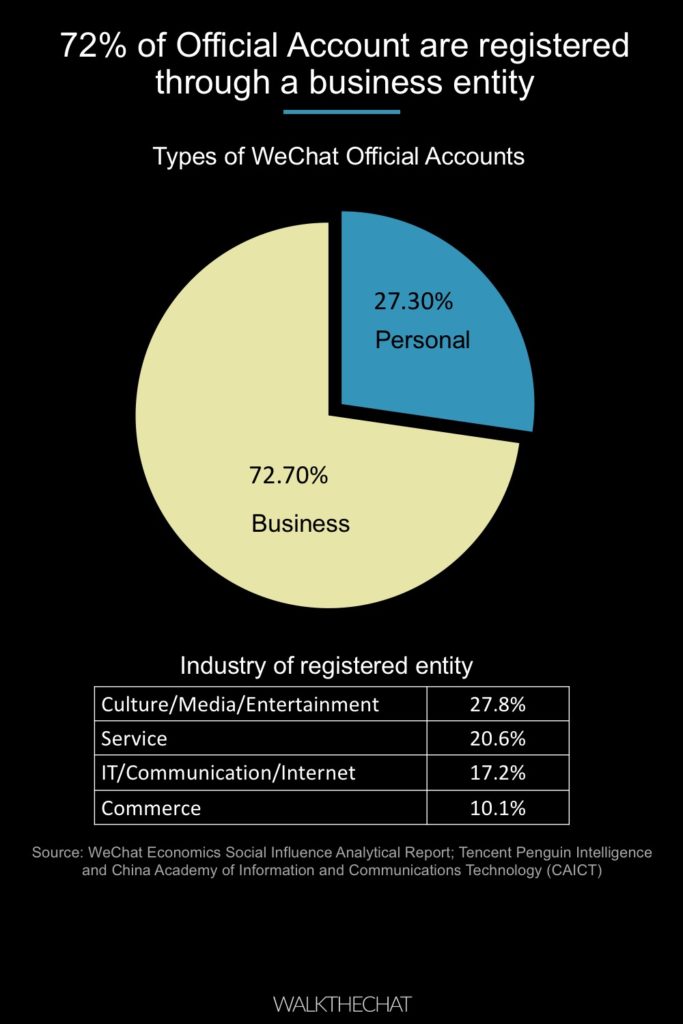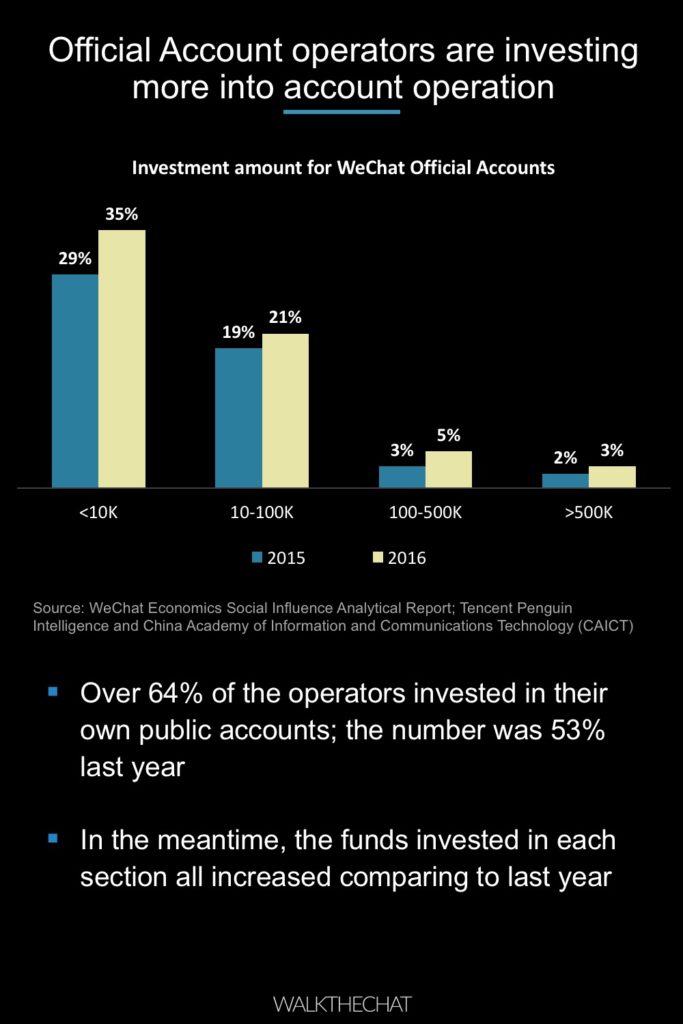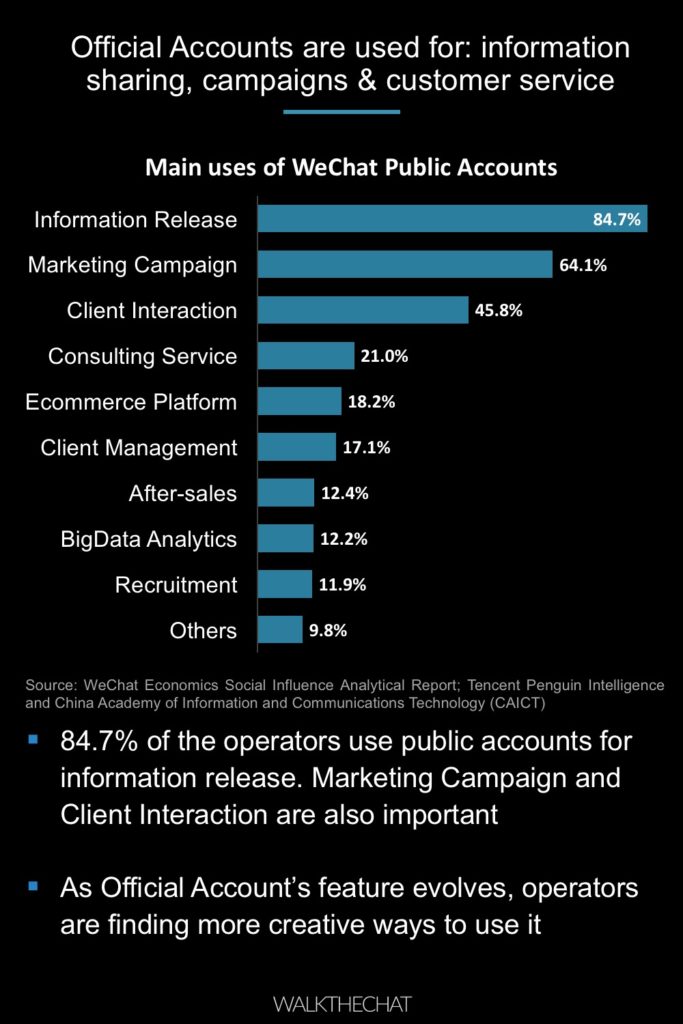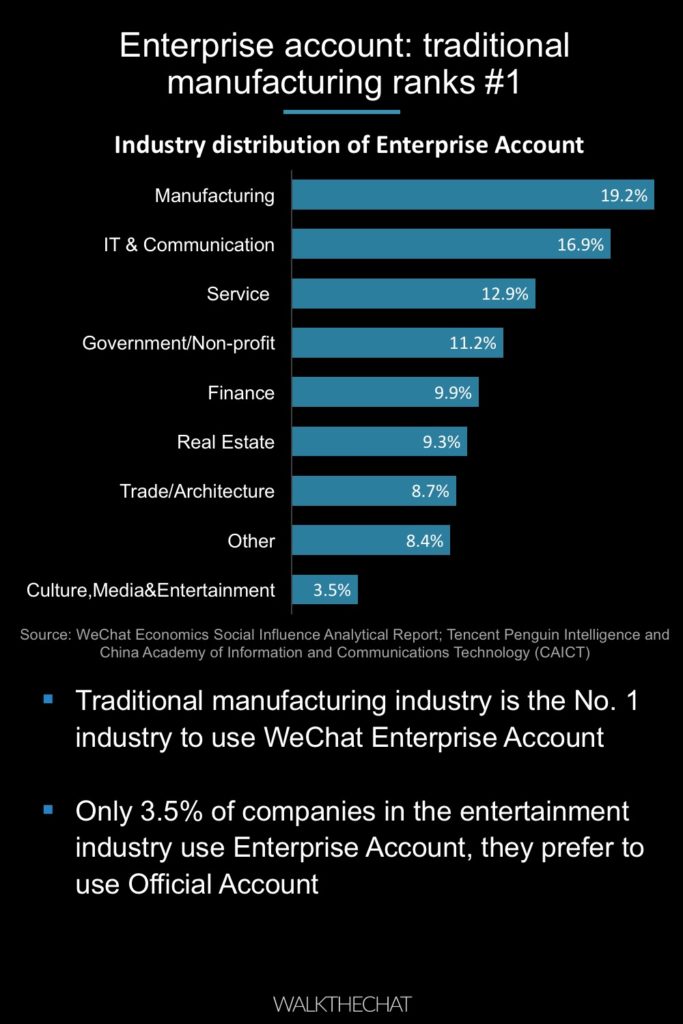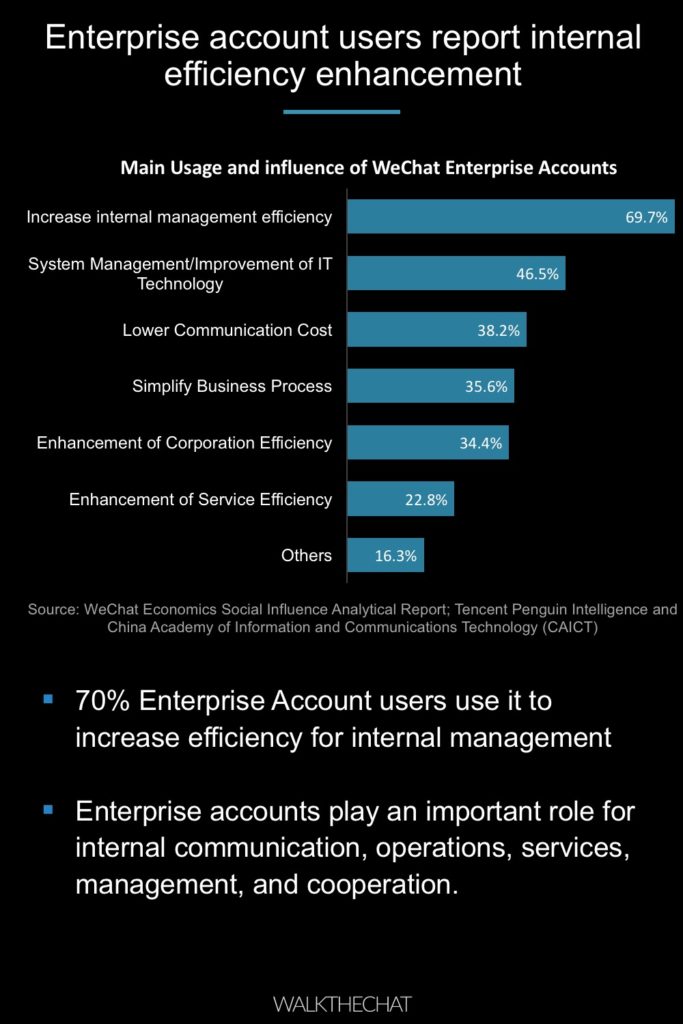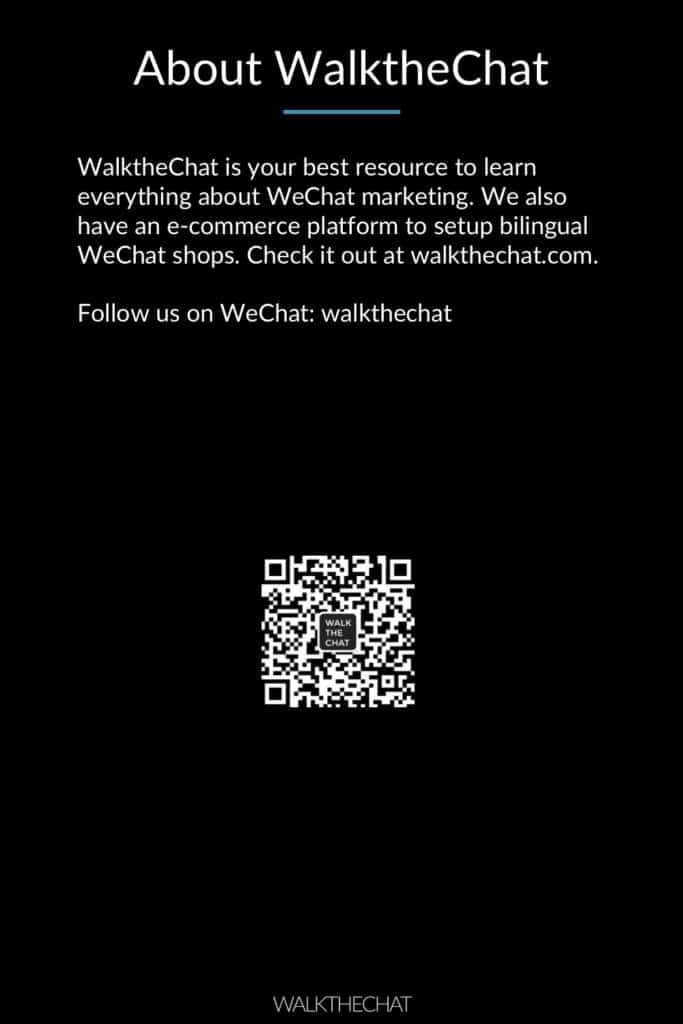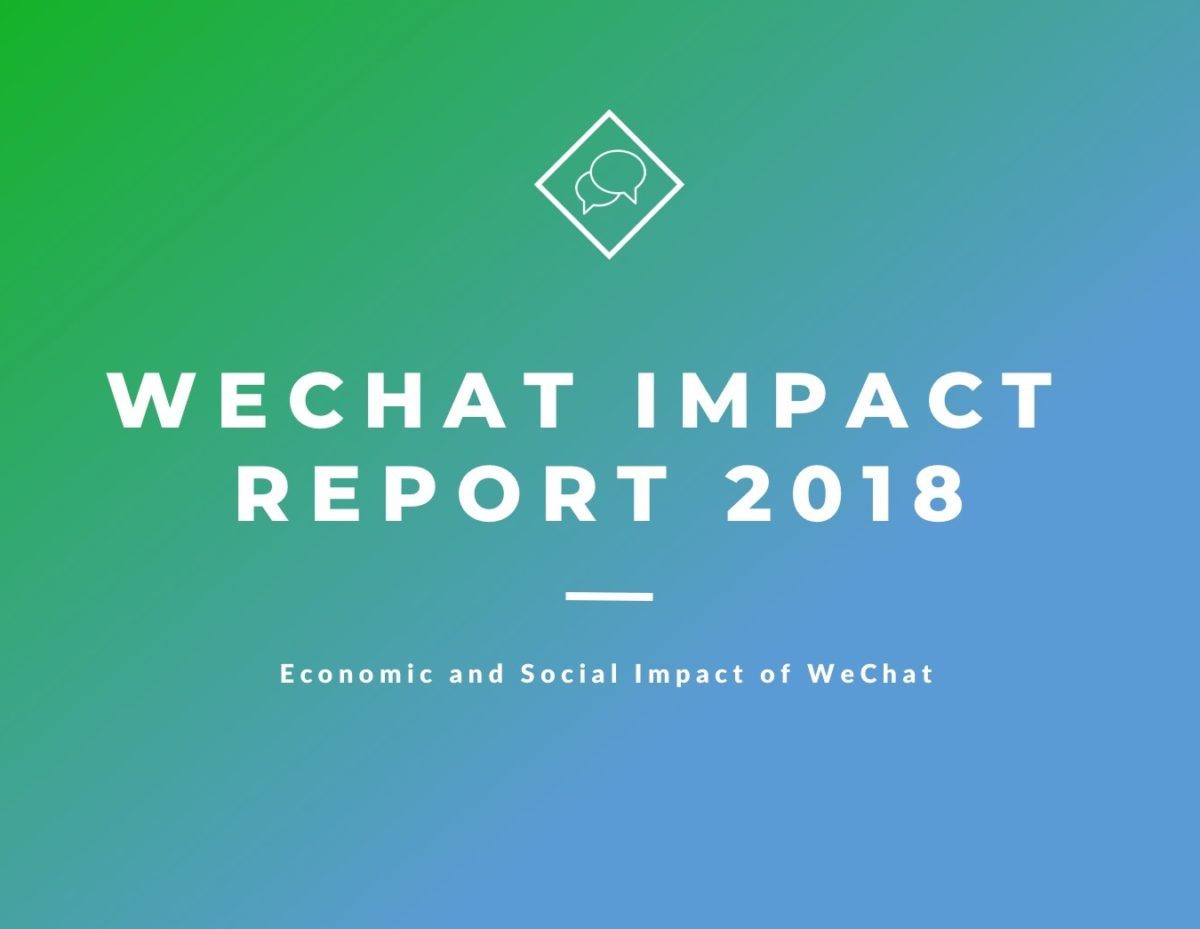The WeChat Impact Report 2018 is out!
Among the highlights:
- WeChat-driven information consumption reached RMB 209. 7 billion
- WeChat accounted for 34% of the total data traffic of users
- WeChat drove RMB 333.9 billion traditional consumption, covering travel, food, shopping, tourism, etc.
- WeChat contributed the employment of 20.3 million persons in 2017, more than twice the 2014 figure
- The number of stores accepting WeChat Payment in Japan was multiplied by 35 in 2017
And much more… read on!
Impact on consumption
WeChat-driven information economy has reached RMB 209.7 billion, making up for 4.7% of China’s total information consumption.
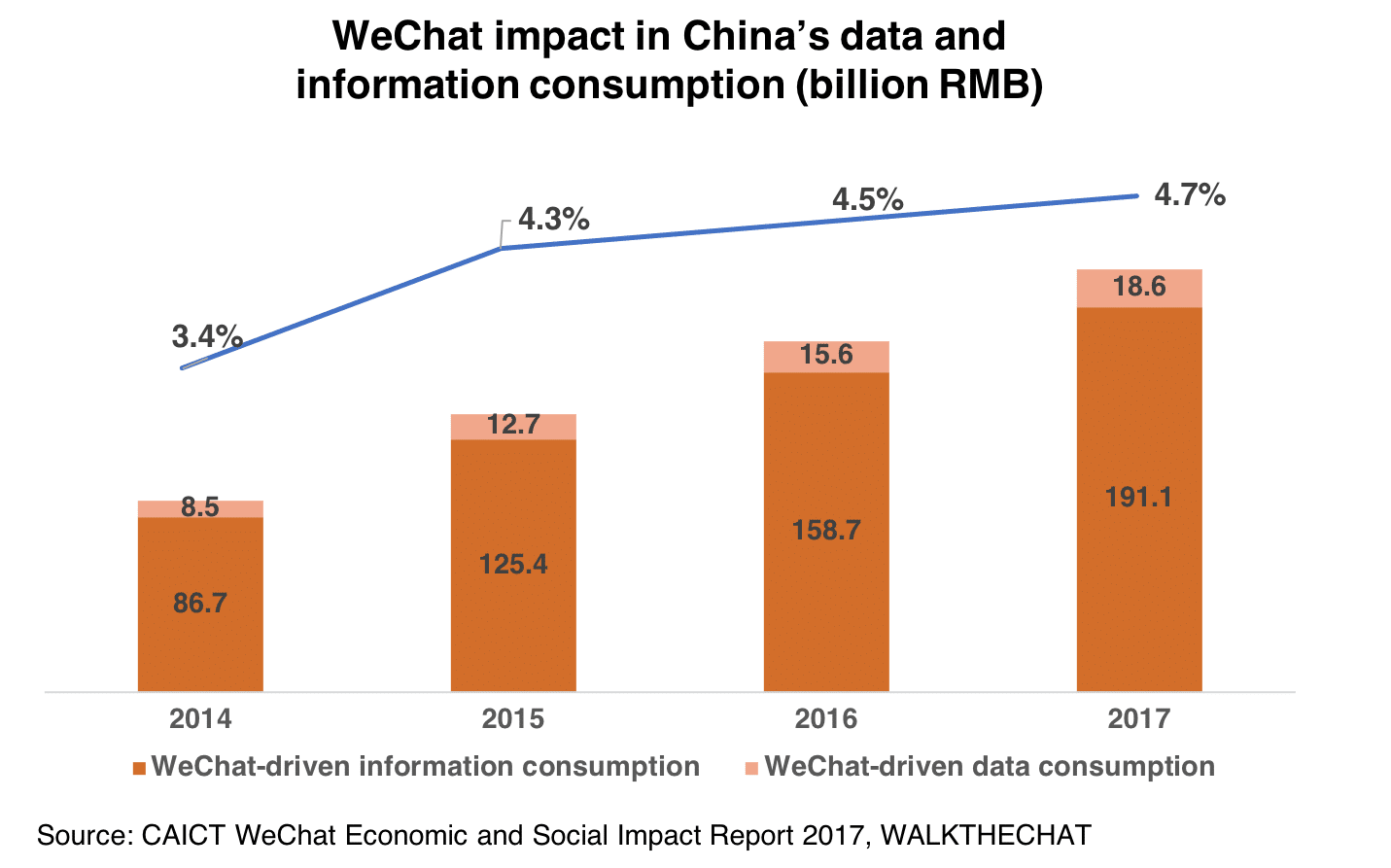
In aggregate, WeChat makes for an outstanding share of total mobile traffic in China: 34.0%. In comparison, Facebook makes up for only 14.1% of mobile traffic in North America.
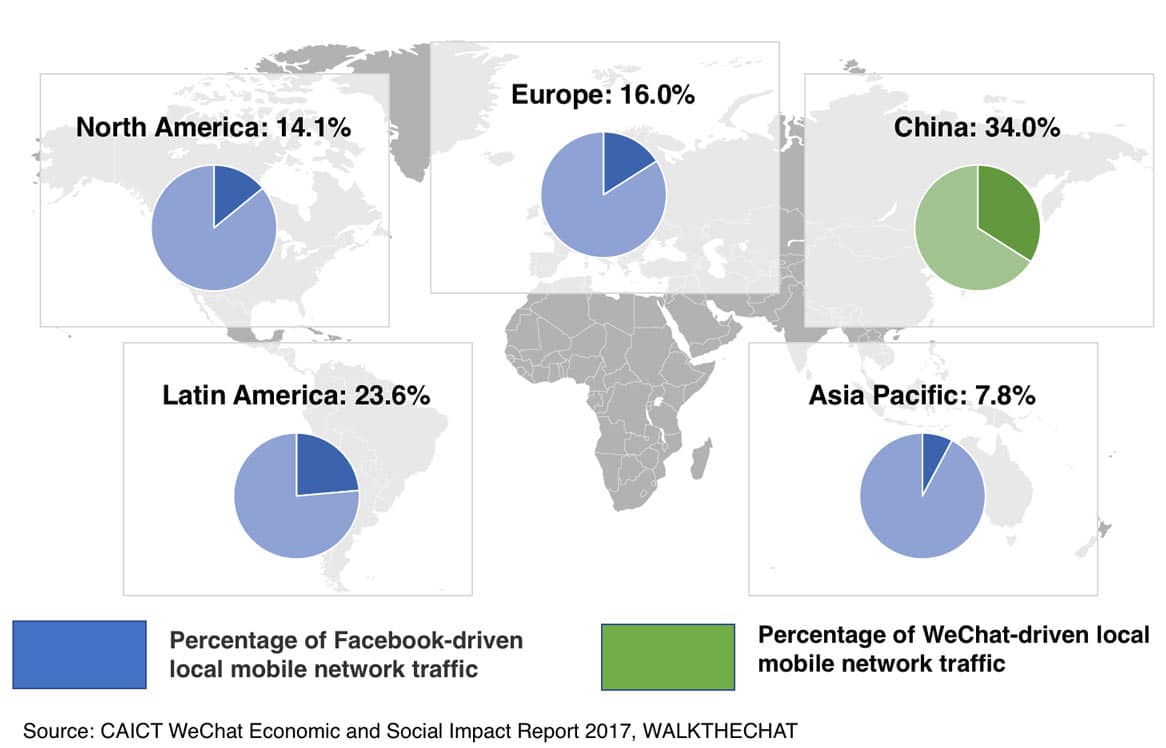
WeChat-driven consumption in traditional sectors of the economy has also been rising exponentially, rising 22.2% in 2017 to 333.9 billion RMB.
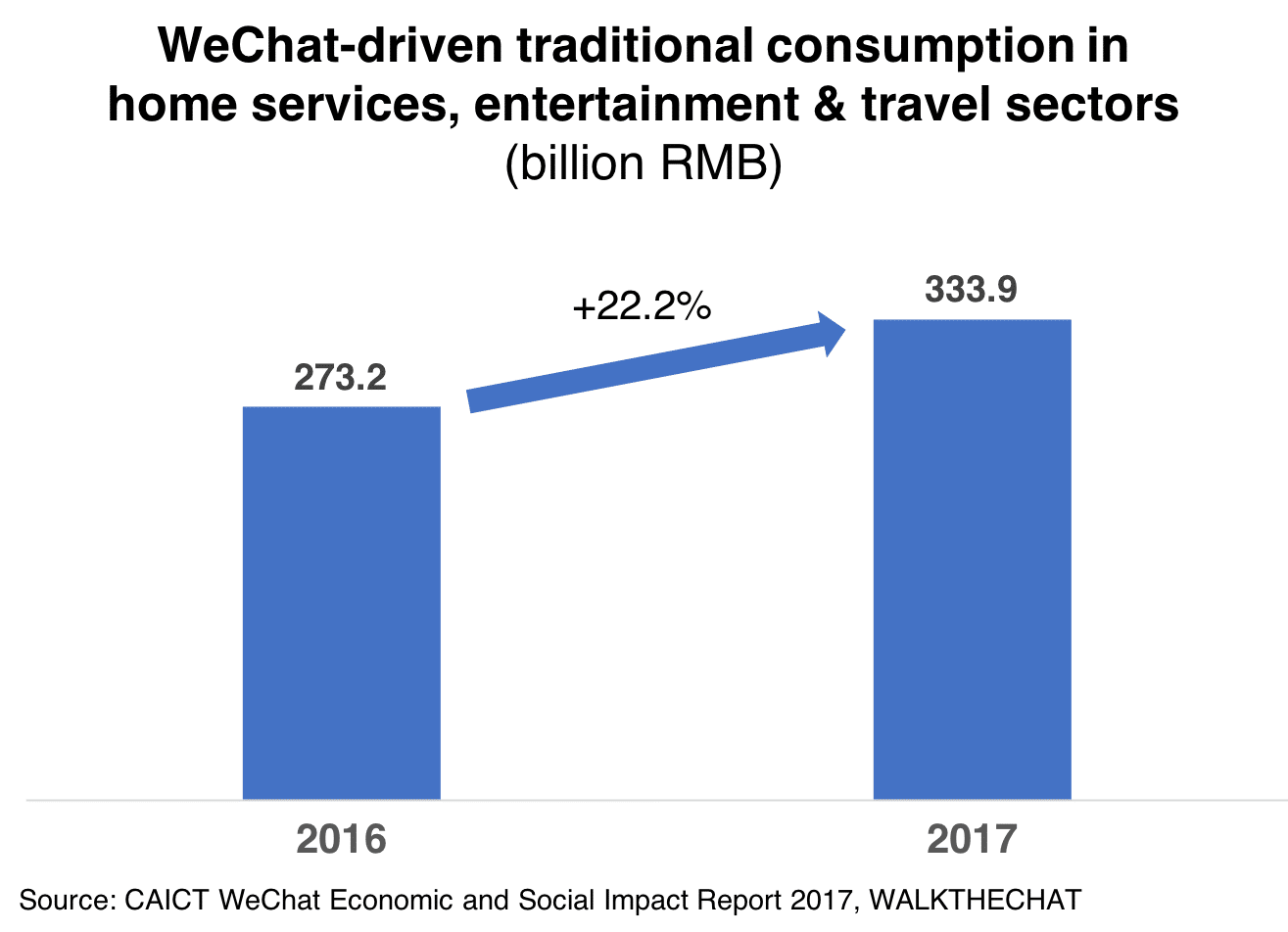
WeChat helped to create 20.3 million jobs in 2017, more than twice the 2014 figure. This partly includes bloggers and entrepreneurs who started companies via WeChat Official Accounts, many of which later become million-dollar brands. According to WeChat, the number of registered WeChat Official Account has reached 20 million, and active Official Account reached 3.5 million by September 2017. The WeChat ecosystem is contributing to the Chinese economy overall.
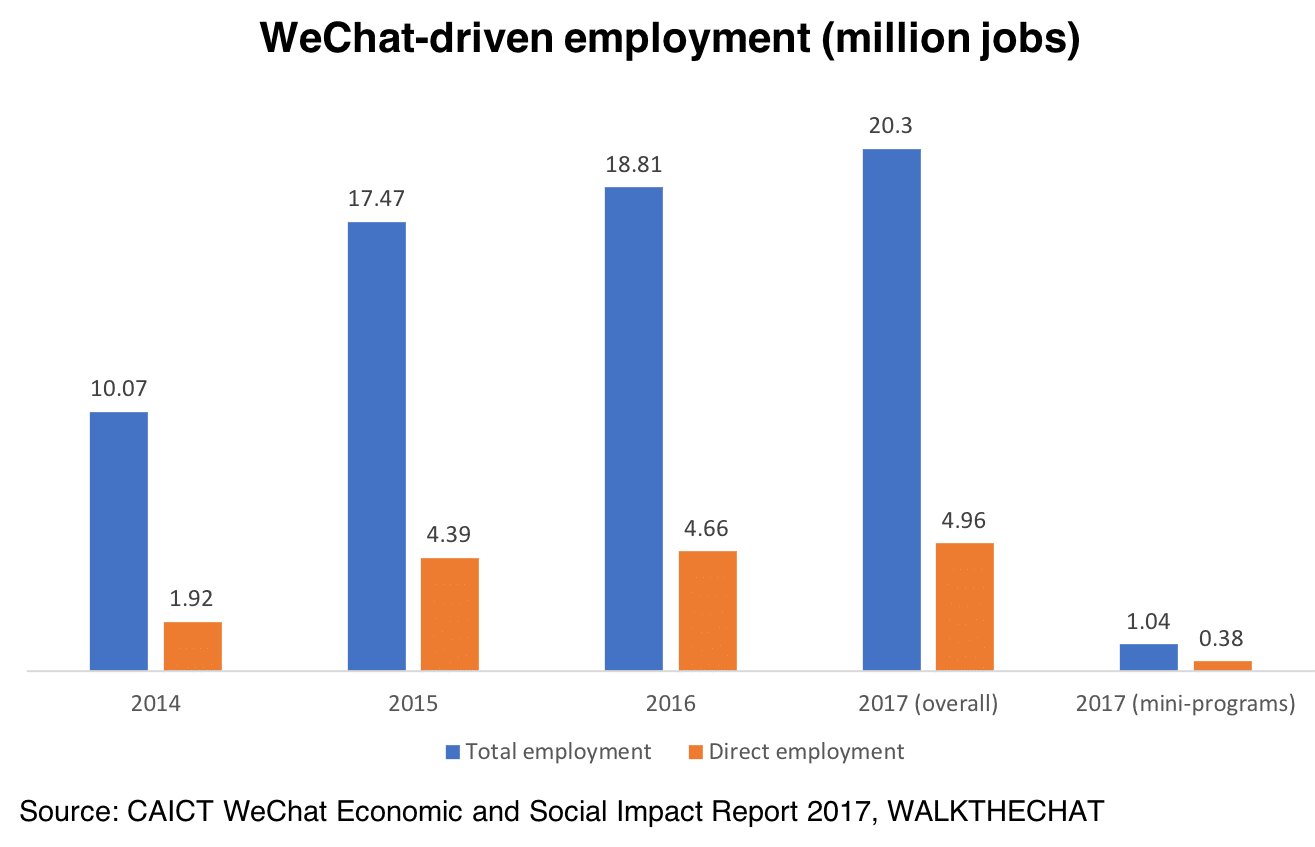
WeChat is among the top App that contributes to the highest percentage of data consumption. What’s interesting is the older generations depends more on WeChat. For users over the age 60, WeChat contributes to over 50% of the data consumption for 60% of users. While for users who are 18-35 years old, WeChat takes less than 30% of data consumption for half of the users. It could be caused because the younger generation is more likely to spend data on other apps such as games, video and other social media Apps.

The social impact of WeChat
The number of users donating to charities via WeChat reached an impressive 40.3% in 2017, almost twice the 2015 figure.
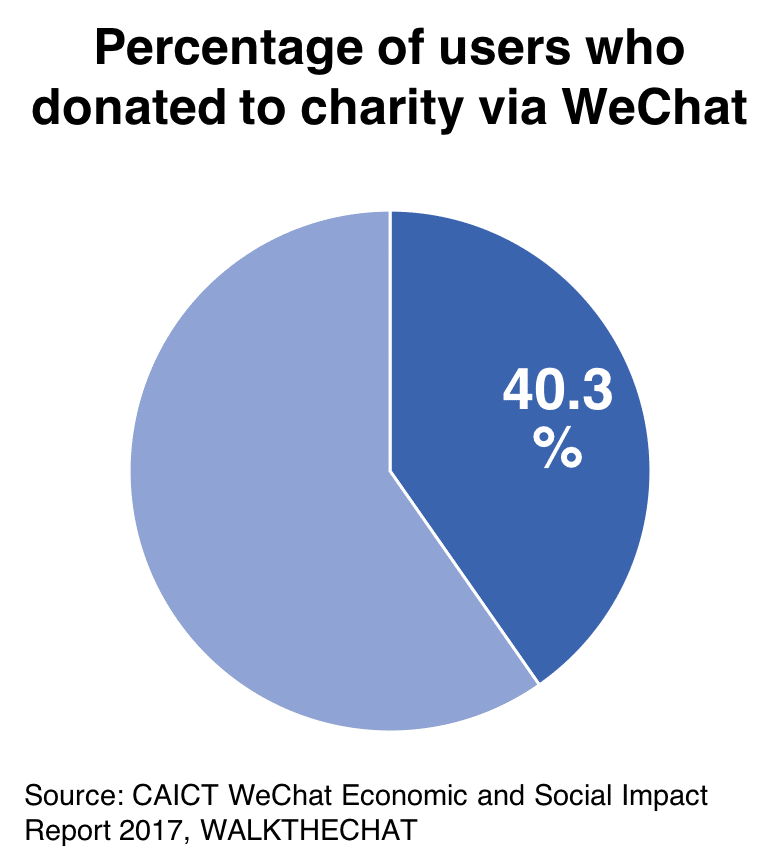
The cumulative of WeChat City Service Users is also booming, many of these services have doubled the number of users between 2016 and 2017.

In the healthcare sector, the impact is particularly strong: waiting time is shortened by 43.6 minutes on average in institutions which implemented WeChat.
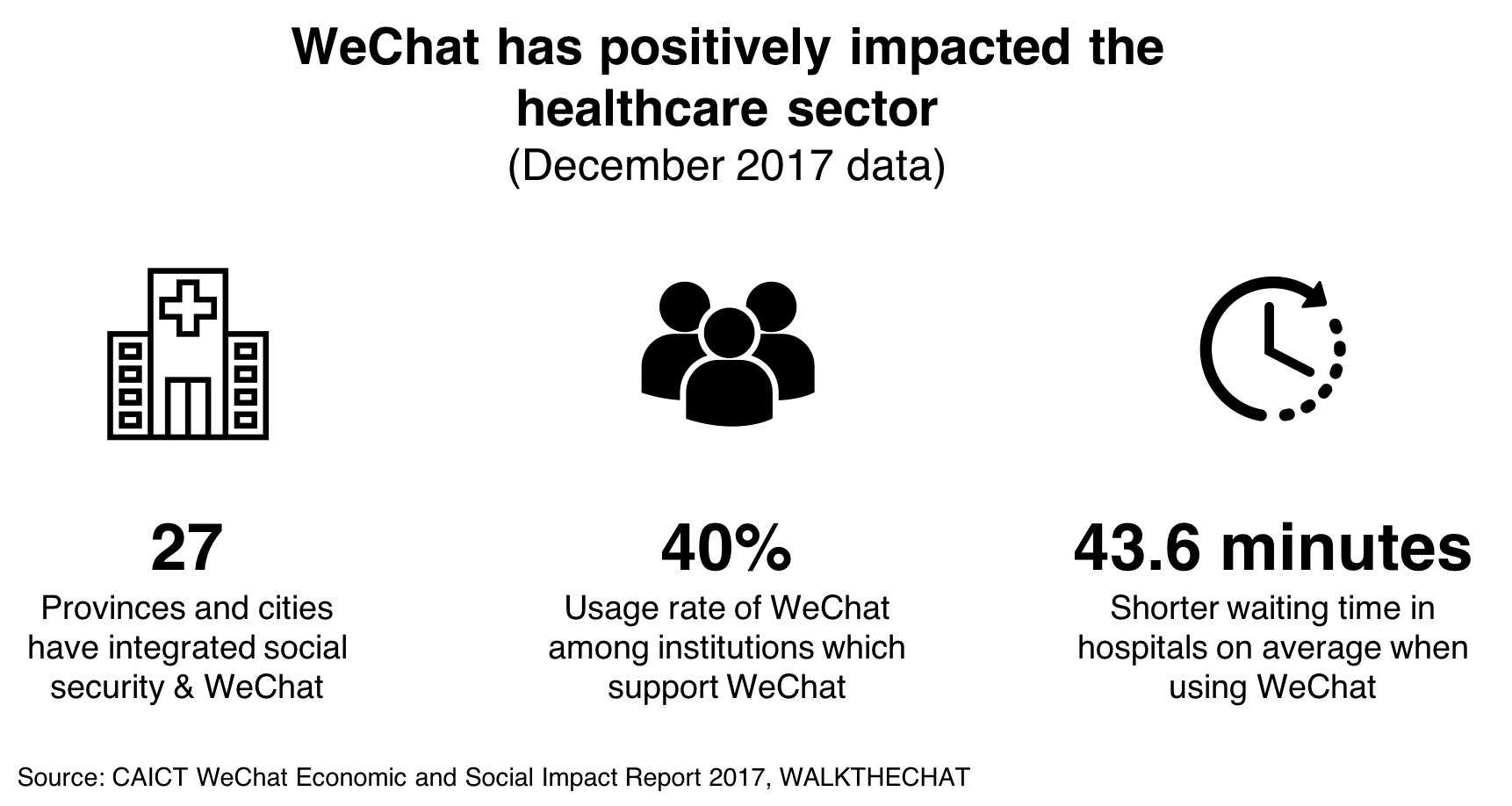
WeChat users are more balanced distributed among users of all age in 2017 than they were in 2015.
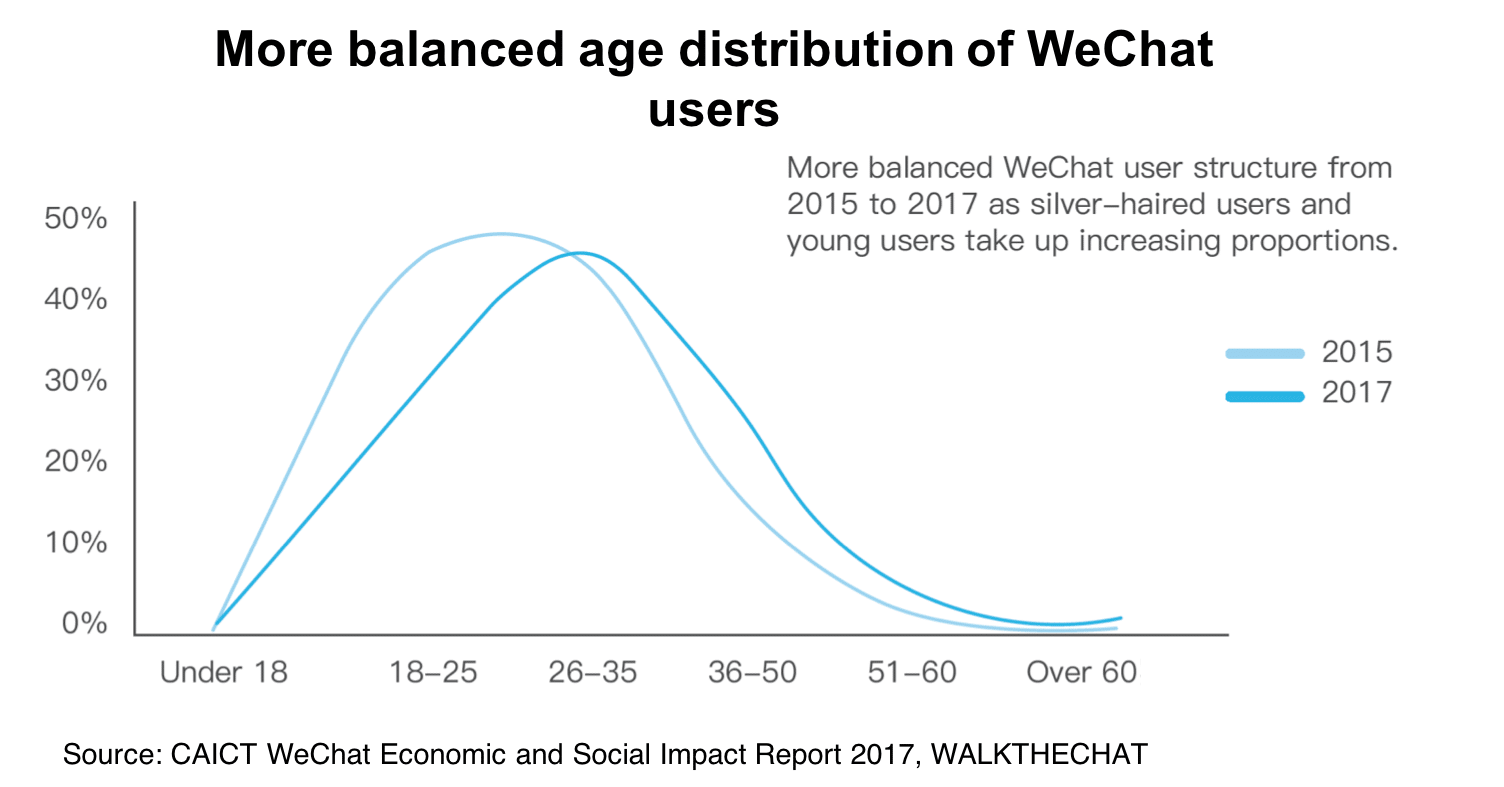
WeChat Payment
Penetration of WeChat payment has been skyrocketing, especially for users under 18 years old where it reached an impressive 97.3% in 2017. For users over 60 years old, WeChat penetration reached 46.7%. Given this could be the first time these 2 groups of users have a smart phone, the penetration of WeChat Pay is very impressive.
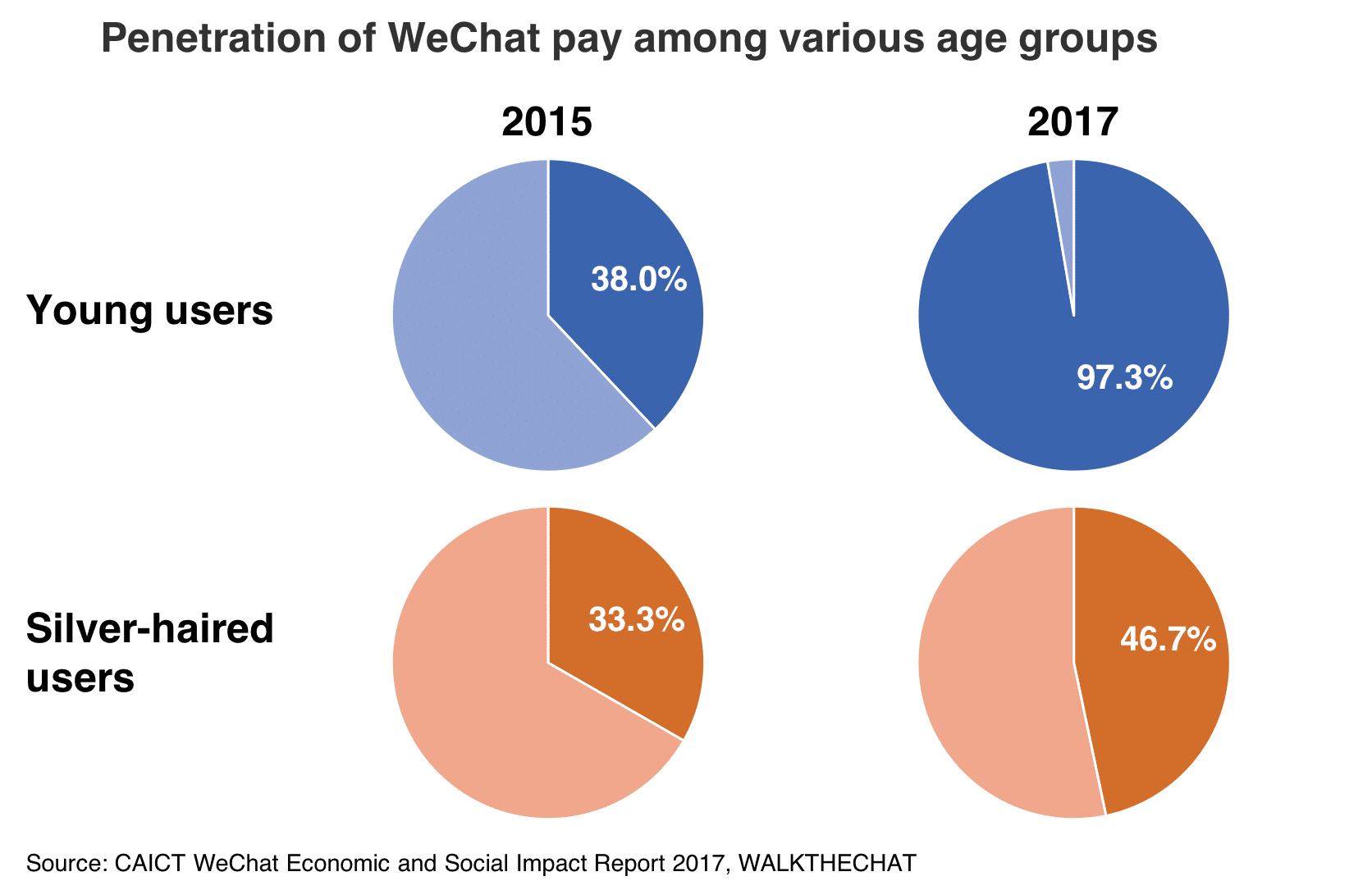
Usage almost doubled in most situations, especially in daily-life expenses such as supermarket payments, food payments or online shopping. The most popular use case for WeChat Pay is in an offline environment, such as the supermarket, and restaurants. 45.2% people use WeChat for online shopping.
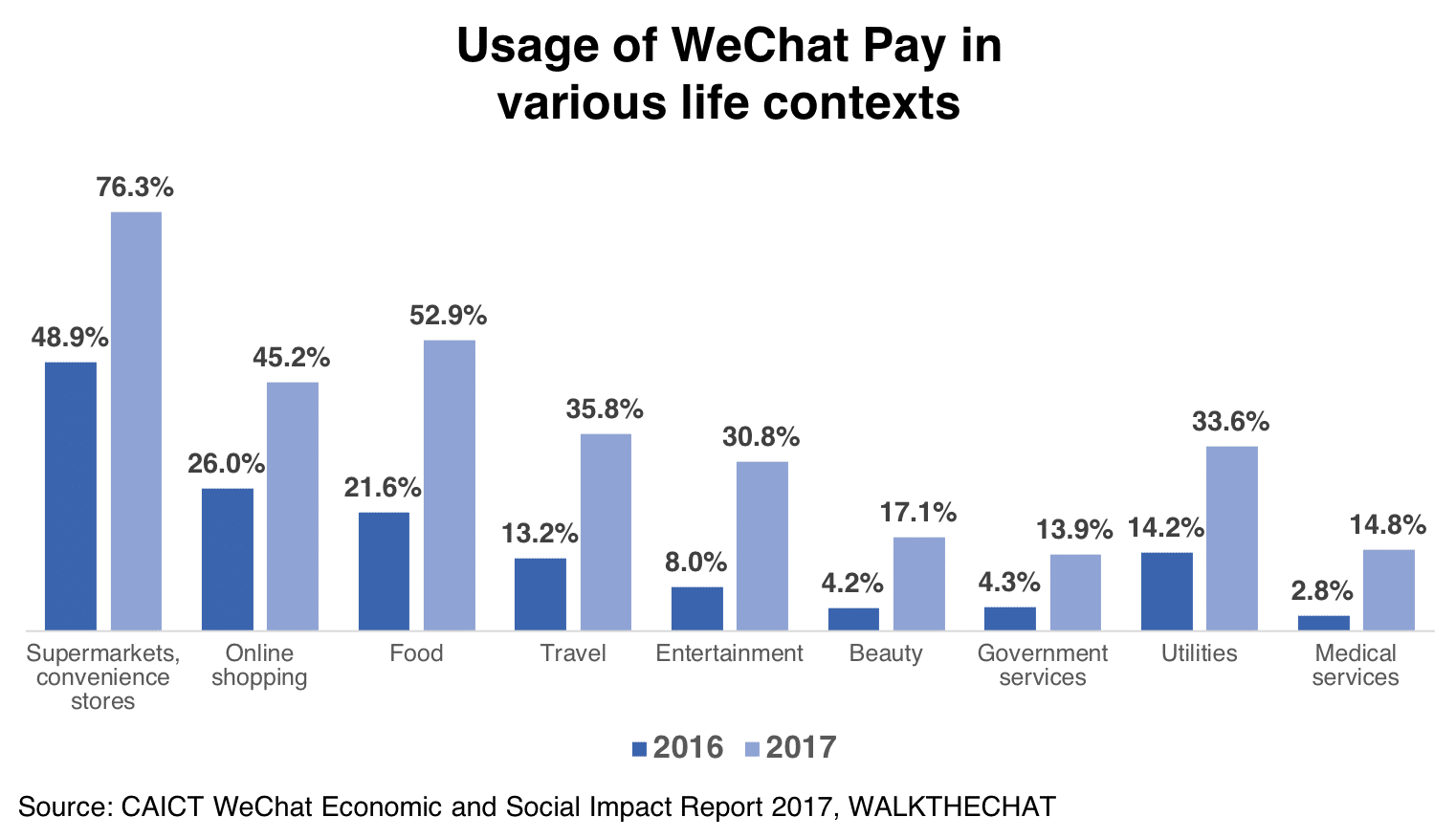
Outside China, WeChat has also seen explosive growth in catering to Chinese tourists. In Japan, the number of stores receiving payments via WeChat Payment has been multiplied by 35 in 2017 only!
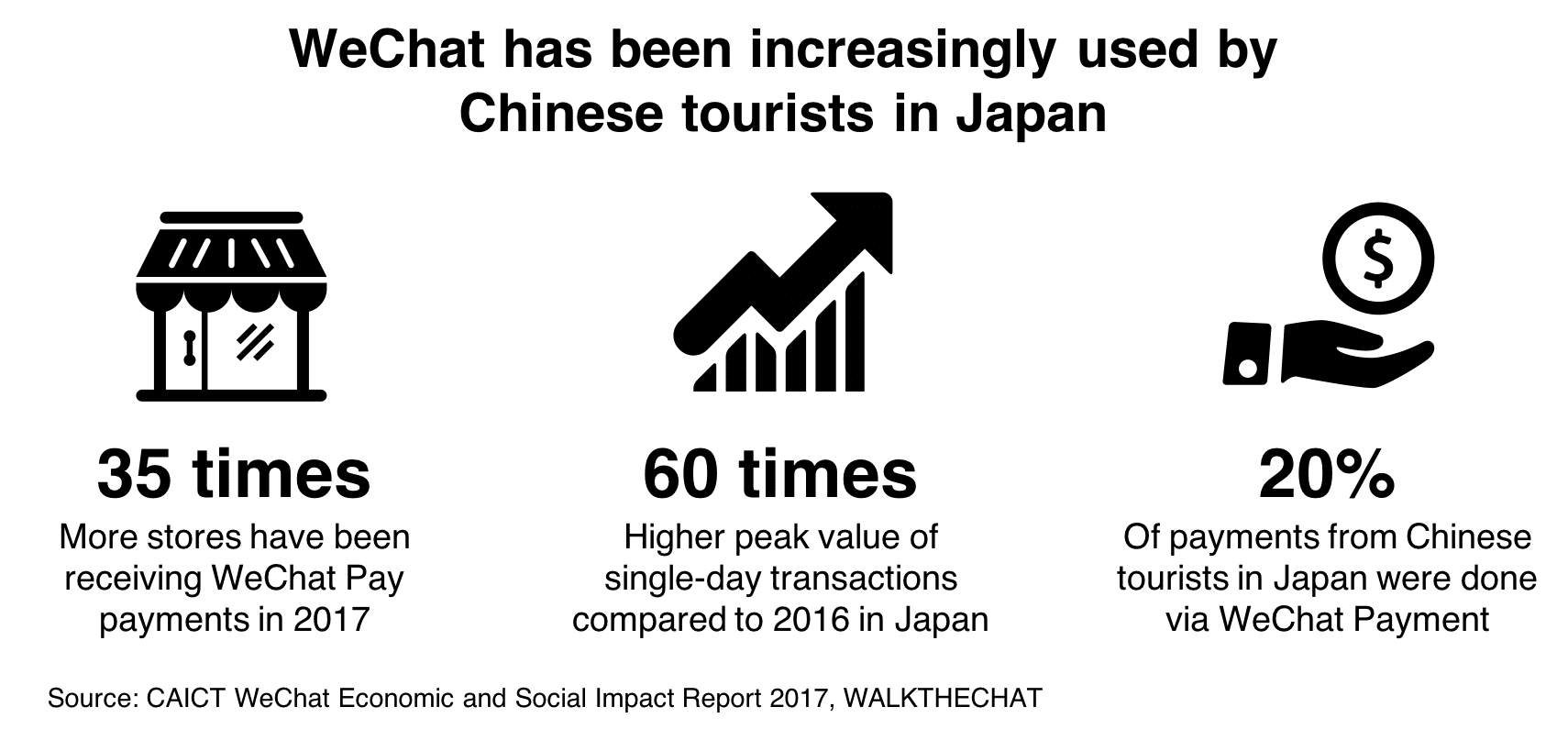
WeChat Official Accounts and Mini Programs
Subscription to official accounts have been growing in most categories (although relatively slowly due to increasing competition between WeChat Official Accounts)
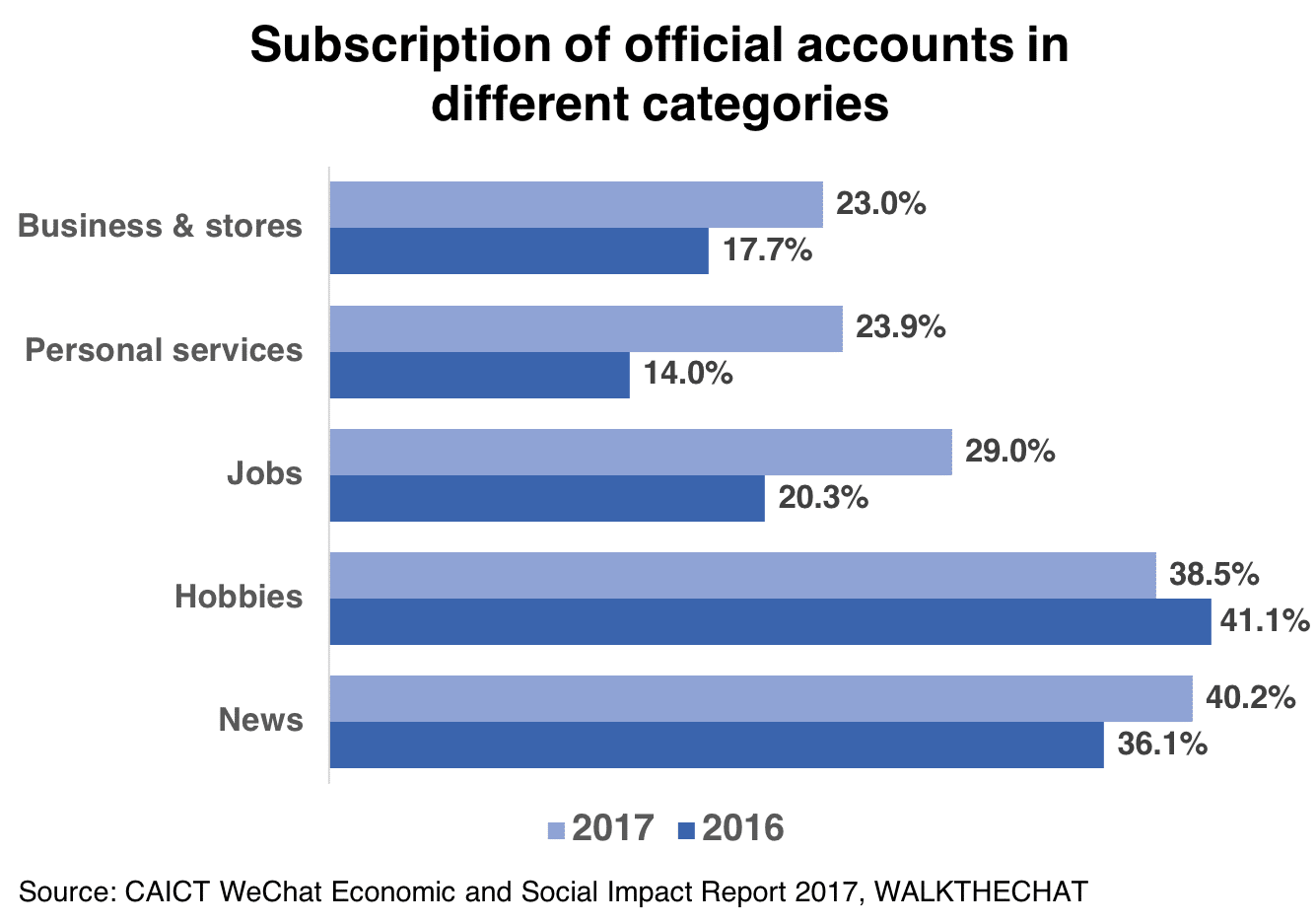
WeChat at work (the “Slack” equivalent of WeChat) has reached 30 million active users from 1.5 million registered enterprises.

WeChat Official Accounts have been satisfactory to their operators: 34% of them mentioned that the usage of WeChat Official Accounts enabled them to decrease costs by more than 30%.
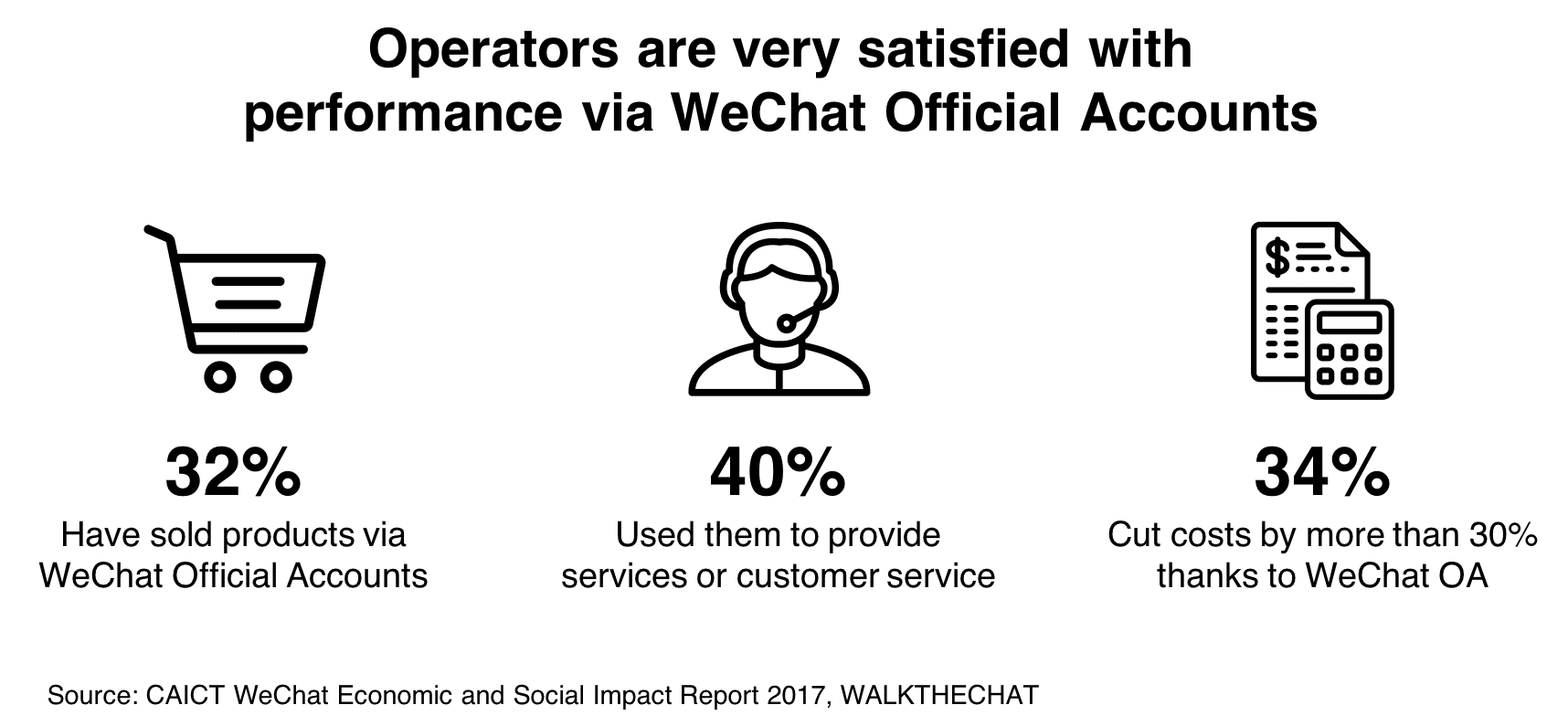
WeChat mini-programs have seen the most dramatic adoption trend. 580k of them were created by the end of 2017.
The social e-commerce application Mogujie disclosed that the conversion rate of its mini-program is twice higher than on its native application. Group Buying contributed more than 70% of new purchasers in the mini program. Cash Off brought 500,000 new users within 12 days from its launch, of which 18% purchased later.
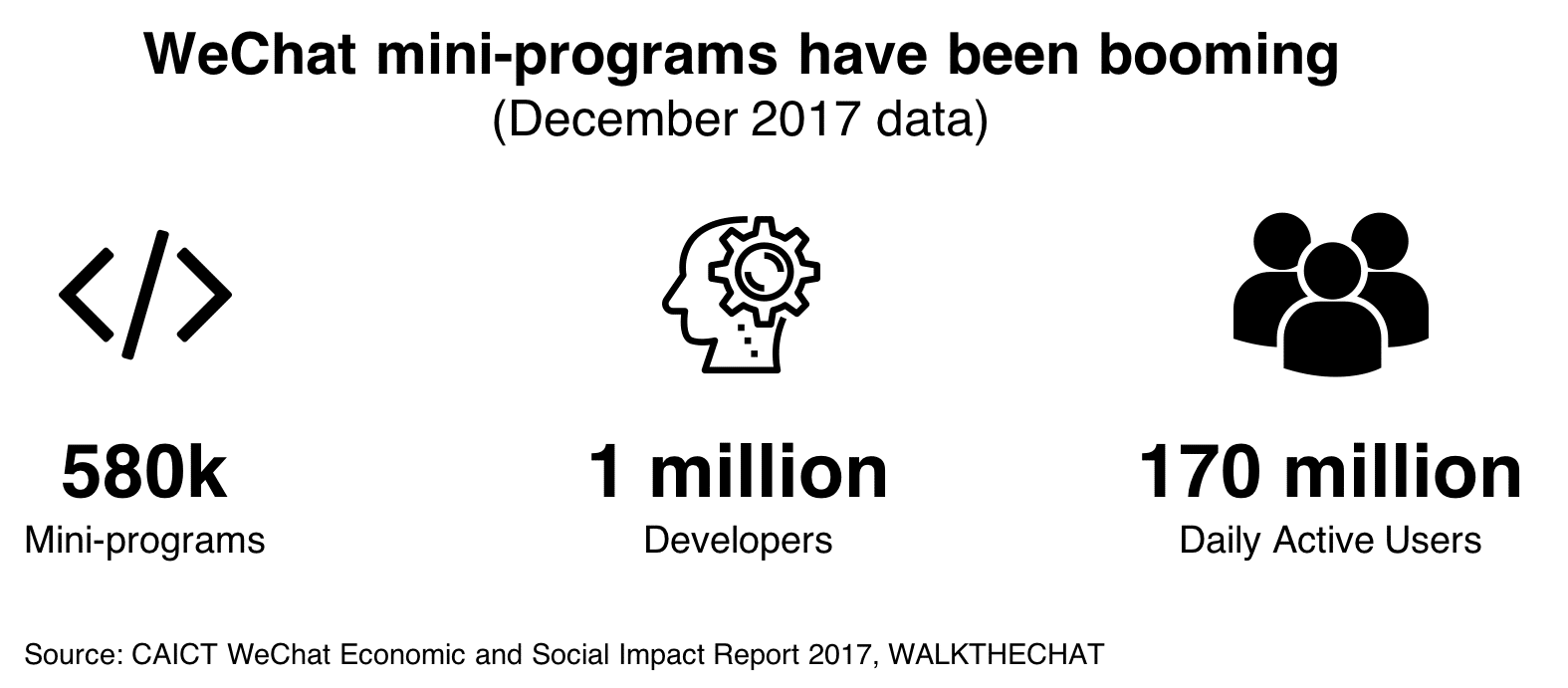
Offline stores also started using mini-programs: Yonghui Superstores saw the digitization of its users skyrocket from 30% to 87% after adopting WeChat mini-programs.
In the public sector, “Bus Steward” 巴士管家 was launched in 13 cities in Jiangsu province to enable users to purchase transportation tickets via WeChat mini-programs. By the end of 2017, the mini-program had been used 11 million times.
Conclusion
Although WeChat has nearly saturated its growth potential in China in terms of the number of users (with more than 1 billion Monthly Active Users), the App is still very far from resting on its laurels.
From business innovation through city services and cross-border commerce, to technical innovation with mini-programs, WeChat keeps reinventing itself and discovering new paths for growth.
2017 has been an impressive year for WeChat, and the momentum shows no signs of slowing down.
WeChat Impact Report 2016
Key highlights include:
- 70% of users spend more than 100 RMB per month on WeChat
- WeChat news overtakes both news websites and TV combined
- 61% of WeChat users open WeChat more than 10 times per day
- 28% of users have more than 200 friends, that’s more than twice last year’s data
- 61.4% of users check moments each time they open WeChat
